The best time to go to Fiji

Oct 13, 2023 • 5 min read

Find the best time to relax on one of Fiji’s dazzling beaches © jhorrocks / Getty Images
White sand beaches, swaying palm fronds, colorful coral reefs: for many, the allure of Fiji is in its landscapes. Yet this South Pacific archipelago offers just as many incredible experiences as it does sights.
The best weather coincides with higher prices and bigger crowds in Fiji, but there’s never a bad time to visit – not even during cyclone season. So whether you want to lounge on a beach, sail between islands or snorkel with manta rays, here’s when to go to Fiji.


June to September is the high season in Fiji – and the best time for enjoying some idyllic weather
Fiji has two seasons: summer (the wet season) and winter (the dry season). The latter (generally June to September) is the peak tourist season in Fiji with temperatures hovering between 20–30ºC (68–86ºF). Expect an uptick in accommodation prices. The large resorts on Denarau Island are usually filled with families from Australia and New Zealand, who come during the school holidays.
The words “high season” might conjure images of crowds jostling for a spot in the sand, but outside of Denarau, resorts are spread out amongst the islands , making it possible to find a slice of serenity even at this busy time of year.
This is also the best time to enjoy Fiji’s ocean adventures. Surfers saddled with board bags and spare leashes come to catch waves at iconic surf spots like Cloudbreak and Restaurants. For the first time in seven years, the World Surf League Championship Tour will return to Fiji in August 2024. Even if you’re not a surfer, it’s worth catching the 20-minute boat ride out to watch the pros try to make it through near-perfect barrels.
Peer out on the horizon during these months and you’ll likely notice the silhouettes of sails out over the water. Sailors from throughout the South Pacific blow into Fiji to explore the islands by boat and participate in Fiji Regatta Week during September. It’s a great time to sign up for a day’s sailing or try your hand on your resort’s Hobie catamaran. For a glimpse at Fiji’s long seafaring history, pay a visit to the Fiji Museum and admire a replica drua , a traditional sailing canoe. A working 72ft (22m) traditional vessel, the Uto Ni Yalo often sails around the islands during this time as well.
Under the sea’s surface, there’s plenty going on during this time too. The best time to scuba dive and snorkel with manta rays is from May to October, as they hang around Fiji’s Yasawa Islands and the Great Astrolabe Reef off Kadavu. A lack of rainfall around the islands of Vanua Levu and Taveuni creates great visibility during this time for scuba divers keen to explore thriving reefs of soft and hard corals.

Visit Fiji in May or October for fewer crowds but plenty of sun
May and October are considered Fiji’s shoulder months, offering that sweet spot of fewer fellow tourists and pleasant weather. In May, the start of the dry season, temperatures climb towards the high 20°Cs (high 60ºFs). By the end of October, Fiji’s temperatures consistently warm up to the low 30°Cs (low 80ºFs) with relatively low humidity.
October is also one of Fiji’s most festive months. At the start of the month, Fijians celebrate Fiji Day, commemorating their independence from British rule. Many Fijians will use this long weekend to head to the beaches, enjoy a hearty feast (called a lovo ), and put on music and dance performances. During early October, Uprising Beach Resort hosts the largest music festival in Fiji. It’s a chance to kick your shoes off and dance as local musicians play from midday until late into the night on the beach.
At the end of October (or November depending on the year), Fiji also celebrates the Hindu holiday Diwali. Diwali is a festival of lights where Fiji’s skies are alight with fireworks. It’s customary to hop from home to home enjoying incredible Indian curries and sweets, lighting candles and exchanging gifts. Nearly half of Fiji’s citizens – predominantly the Indo-Fijian population – are Hindu, though Diwali celebrations extend to everyone.

Take advantage of low season rates during Fiji’s cyclone season (November to April)
The climate in Fiji is warm all year round, especially during tropical cyclone season. This falls during the wet season, which begins in November and runs until April. According to the Fiji Meteorological Service, the peak tends to be between January and February, the hottest months in Fiji.
While planning a holiday to Fiji during this time can feel a bit risky if you seek sunshine and calm seas, there is still a high chance of having pleasant weather. Temperatures can climb during the day, though most days they’ll linger around the high 20ºCs (high 60ºFs). On the smaller islands, heavy rainstorms come and go quickly, often leaving blue skies in their wake. Outside of the Christmas and New Year’s school holidays, you’ll find that accommodation prices tend to be cheaper than most other months of the year. You’re also likely to have your pick of room choices.
Christmas is one of Fiji’s largest religious holidays, as over half of the population is Christian. Special markets, music performances and events take place on the main islands, and a floral shirt or dress paired with sandals makes for the perfect party attire. Fiji’s major cities throw parties for New Year’s Eve and celebrations continue late into the next day as Fiji is one of the first countries to ring in the New Year. The International Date Line once ran through the island of Taveuni , and straddling the former date line on New Year’s Day is a novel thing to tick off your bucket list.
March is usually the wettest month on Viti Levu’s western end, with an average rainfall of 324mm (12.7 in) in Nadi. In the cities, Hindu Indo-Fijians bump up the saturation by throwing colorful powders at one another in celebration of Holi, a festival of new beginnings. At the end of March and early April, join a church service for Easter and prepare to be enchanted by Fijian hymns.
April salutes the end of cyclone season, with rainstorms dwindling by the end of the month. Temperatures, however, linger into the high 20ºs (high 60ºFs) all month long. If you’re lucky, the first of the year’s surf major swells are pulsing through Fiji and it could be a great month for scuba diving. While rare, pilot whales occasionally cruise through Fiji’s waters starting in April.
This article was first published Apr 9, 2021 and updated Oct 13, 2023.
Explore related stories

Jul 10, 2024 • 7 min read
Few destinations are as evocative as this pair – which is why we asked two expert writers to make the case for each.

Jun 11, 2024 • 5 min read

Oct 19, 2023 • 7 min read

Oct 17, 2023 • 7 min read

Oct 14, 2023 • 4 min read

Oct 12, 2023 • 3 min read

Oct 12, 2023 • 7 min read

Oct 4, 2023 • 6 min read

Apr 29, 2022 • 2 min read

Feb 18, 2022 • 6 min read
Fiji Travel Guide
Courtesy of Bruce Hood | Getty Images

Best Times To Visit Fiji
The best time to go to Fiji is whenever you have the chance. This is Fiji we're talking about! Temperatures stay pretty constant through the year, with highs resting in the 80s; however, from November to April, you might have to contend with some tropical storms. For the Fiji experience that you've always dreamed of, the best time to visit is from July to September, but you will have to contend with sky-high prices as this is also peak season. The shoulder seasons are short – May to June and October – but they're nice times to visit since heavy crowds will either have just departed or have yet to descend.
Weather in Fiji
Data sourced from the National Climatic Data Center
Find Flight and Hotel Deals
Navigate forward to interact with the calendar and select a date. Press the question mark key to get the keyboard shortcuts for changing dates.
Navigate backward to interact with the calendar and select a date. Press the question mark key to get the keyboard shortcuts for changing dates.
Popular Times to Visit Fiji
Tourism volume is estimated based on in-market destination search query interest from Google and on travel.usnews.com in 2015-2016. Hotel prices are sourced from a sample of U.S. News Best Hotels rates through 2015-2016.
Explore More of Fiji

Things To Do

Best Hotels

You might also like

Cayman Islands
# 3 in Best Family Vacations in the Caribbean

# 1 in Best Places to Visit in Asia

# 1 in Best Places to Visit in Australia and The Pacific
If you make a purchase from our site, we may earn a commission. This does not affect the quality or independence of our editorial content.
Recommended
The 28 Best Water Parks in the U.S. for 2024
Holly Johnson|Timothy J. Forster May 8, 2024

The 18 Best Napa Valley Wineries to Visit in 2024
Lyn Mettler|Sharael Kolberg April 23, 2024

The 25 Best Beaches on the East Coast for 2024
Timothy J. Forster|Sharael Kolberg April 19, 2024

The 50 Best Hotels in the USA 2024
Christina Maggitas February 6, 2024

The 32 Most Famous Landmarks in the World
Gwen Pratesi|Timothy J. Forster February 1, 2024

9 Top All-Inclusive Resorts in Florida for 2024
Gwen Pratesi|Amanda Norcross January 5, 2024

24 Top All-Inclusive Resorts in the U.S. for 2024
Erin Evans January 4, 2024

26 Top Adults-Only All-Inclusive Resorts for 2024
Zach Watson December 28, 2023

Solo Vacations: The 36 Best Places to Travel Alone in 2024
Lyn Mettler|Erin Vasta December 22, 2023

26 Cheap Beach Vacations for Travelers on a Budget
Kyle McCarthy|Sharael Kolberg December 4, 2023

The Best Time to Visit Fiji: All About Fiji Travel Seasons!

- Latest Posts

- KLM vs Delta: Is KLM a Good Airline? - January 26, 2022
- The Best Time To Visit Brazil – Seasons, Events, Activities! - January 23, 2022
- The Best Time to Visit Fiji: All About Fiji Travel Seasons! - January 22, 2022
Fiji is a tropical delight with pleasant weather. The country is naturally beautiful Both the land and the underwater are sweet and offer a fantastic experience to visitors and tourists.
Fiji rarely experiences the winter cold. The minimum temperature in Fiji during the winter season is 18 degrees. This feature makes Fiji a great all-year-round tourist destination. However, that doesn’t mean that all months of the year in Fiji are sunny or feature blue skies.
Being a great year-round tourist destination , the best time to visit Fiji depends on individual preference and the type of vacation you’re aiming to have. Some of the factors that you may want to consider to determine your best time to visit Fiji for a vacation can include weather conditions, costs, and crowds.

Fiji Travel Season: The Best Time To Visit
Fiji has two travel seasons and these are the peak season and off-season. The peak and off-peak tourist seasons in Fiji are one of the most factors that may affect your choice of the best time to visit. The reason for this is because the most popular visiting time in Fiji is the peak season.
Besides being the most expensive time to visit Fiji, it is equally the busiest. July and August in Fiji fall within Australian and New Zealand school winter holidays and this is the peak travel season in Fiji because a lot of families go on vacation within this time. Also, the Christmas/New Year period equally falls into one of Fiji’s busiest time as a lot of families visit this time to take a break during the summer holidays of the Southern Hemisphere.
Thus, June to September during the Australians winter season is Fiji’s peak season with the July school holidays having the most crowds apart from Christmas with the largest crowds. If you’re traveling with kids and want to avoid crowds, avoid visiting during Fiji’s winter school holidays.
However, if you must travel within this period, make reservations for rooms as you would find it difficult to get a place to stay if you leave till the last minutes. If you want to visit Fiji from North America, the best time for you would be between late April to early June, or late July to August.
This is because you would normally get cheaper airfares on Air Pacific and Air New Zealand within this time. June to October is Fiji’s coldest and driest months. The months of November and April in Fiji is the Cyclone season. February and March have the least crowds and the prices of hotels and resorts are cheaper within this period.
Your choice may be limited if you’re visiting Fiji with the whole family. However, if you’re traveling with friends, you can grab one of the numerous off-peak deals and quieter islands during the low seasons of February, March, June, October, and November.
These months are the best time for couples to visit Fiji especially if they’re after a peaceful, relaxing and romantic vacation. Nonetheless, whatever is your best time of the year to visit Fiji, you a broad collection of hotels and resorts to choose from.

Looking for sports, concerts, or music festivals? Find your perfect holiday or city break and save now at Expedia.com
Fiji Travel Seasons

Fiji has three different travel seasons: The high season, the low season and the shoulder season.
1. The High Season
Fiji high season falls in July, August, December, and January. These months’ correlates with the European holiday season with Australia and New Zealand school breaks. The month with the largest crowds in August and during the Christmas and New Year period.
Within these periods, the hotel prices are costliest and inter-island boats and planes frequently fully packed. If you’re traveling during this time, remember to book ahead. Bear in mind that December and January are equally Fiji’s peak wet season when you could potentially experience tropical cyclones. This can result in cancellations of boat and plane trips.
2. Shoulder Season
The shoulder season in Fiji falls between May, June, September, and October which could either be the beginning or end of the wet season. These months don’t fall within Fiji’s peak holiday periods. The weather of the shoulder season is pleasant and comfortable.
You’d enjoy clear skies with cool and dry days. Besides, the travel cost within these periods is low yet to soar. It is equally easy to move around and immediately after the cyclone season; the outdoor events begin.
3 . Low Season
The low season in Fiji falls within November, February, March, and April. The prices of hotels fall at this time and it is not difficult to book seats on boats and planes. However, you may experience occasional cancellation services due to bad weather. There are constant rains during this period, the humidity is not frequently pleasant, and there are potentials of witnessing cyclones.
Best Time to Visit Fiji for Good Weather : May to October

Fiji has a pleasing and a bit mild weather all the year round because Fiji has a tropical climate. Like all tropical climates, Fiji experiences wet and dry seasons. The wet season in Fiji occurs during summer when temperature increase and high humidity result in increased precipitation. Fiji equally experiences cyclones during this period. The rainstorm of the summer season falls between November and March when the temperature is in the low 30’s during the day and a little less to 27 degrees Celsius at night.
Located in the Southern Hemisphere, the dry season occurs in Fiji from May to September when the weather is cooler and the temperature of the water is warm enough for swimming. The weather of this period is equally great for sunbathing and a collection of popular activities and tours.
By and large, the best time of the year to visit Fiji with regards to the dry and wet season is from late October to early November. During this time, the cost of traveling to and staying in Fiji is yet to reach its peak. Also, the weather is dry, relaxed and warm. The beaches and resorts are equally less crowded because it isn’t yet the school holiday.
Mean temperatures in Fiji
Between May and November of the winter season, the temperatures in Fiji are warm during the day and roughly 80 degrees Fahrenheit and cool at night and in the early mornings. During the summer and rainy season in Fiji which falls from November to April, the temperatures can rise to 95 degrees Fahrenheit.
There are usually late afternoon showers. Fiji has a tropical climate with high humidity and rainfall during the summer and low temperatures with dry air during the winter. Nevertheless, the windy weather creates a climatic difference from one island to the other. Discuss with your travel agent to find out what is the weather condition around your hotel or resort.
Fiji Rainstorm
When it normally rains during the winter, afternoon showers occur frequently. During moments of tropical storms or cyclones, the natives and visitors in affected areas are relocated to safe locations. Tropical storms are a common occurrence during the rainy season. The last serious cyclones that occurred in Fiji took place in December 2012, March 2010, December 2009, December 2007 and December of 2003.
If you visit Fiji when it rains, that’s a perfect time to have a task of kava with the locals. Kava is a traditional drink produced from the kava root. It has a mild and calm effect, and each sip is celebrated with a local ceremony. The drink tastes a little like dirty water but a sparkling flavor.
If the weather becomes incremental, you may want to let go of snorkeling and try to witness a Lovo. Lovo is a traditional feast in Fiji which tastes a little like the Hawaiian luau. It includes a pig roasted in an underground oven and wrapped in banana leaves. This is frequently combined with the Meke which is a traditional story-telling dance concert with the performance of an orchestra using percussion instruments.
Visiting Fiji and Weather by Month

Fiji January Weather
January in Fiji is still the peak of tourist season due to the Australian and New Zealand school holidays. January is equally the middle of the rainy season in Fiji. When there are no rainstorms, the temperatures rise but only roughly 5 degrees high to a maximum of 30 degrees Celsius. However, the high relative humidity can make it difficult for most tourists to visit during this time. Try to check the local media, hotel news and official website for information about potential cyclones.
Fiji February Weather
February carries the most risk of a potential cyclone. Fiji experiences an average of one cyclone in a year. Some years are cyclone-free. In April 2018, the country experienced two cyclones in a single week and Winston which was the strongest in the whole of pacific south caused serious disaster in February 2016.
Although most of the cyclones didn’t pass through the major tourist centers, the peripheral effects of the winds and rains make air, boat and road travel a bit difficult.
Fiji March Weather
March is the wettest month in many parts of Fiji. Suva, for example, experiences rain three days out of thirty-one days in a month. This month is usually characterized by heavy and short downpours. However, sunshine usually follows almost immediately after. Nonetheless, it still disrupts boat travel and flights may be canceled while some roads are damaged by floods.
April weather in Fiji
The heavy downpours begin to go down in the middle of April. This month equally marks the end of the standard cyclone season and the relative humidity is much lower. However, it may potentially rain. So, if you are traveling this time, don’t forget to still carry your umbrella and rain gear.
Fiji and May’s Weather

May is the beginning of the dry season and formally ends the potentials for cyclones. The weather fast gets cooler and drier, however less-heavy rains that don’t last long could still fall for one or two weeks more. Fiji Waters in May is clearer for snorkelers and divers, and the winds and waves are milder to pave way for the surfing season.
June’s weather in Fiji
This is great weather to visit Fiji with no more experience of heavy rains. The humidity is equally low and visitors have many days of the month dry and clear and this month starts the beginning of the peak season. The weather is cold at night and this makes sleep enjoyable and you may want to put on your sweater when the weather gets dark.
July’s weather in Fiji
From July, the weather in Fiji starts to get cooler and more pleasant. There is little or no rain. The weather can get chilly at night and become as low as 18°C.
Fiji and the August Weather
While the nights are becoming cooler and cooler, the weather during the day gets milder and no hotter and there is hardly any heavy rain during this time. The weather in Europe at this time is commonly hotter and so a lot of visitors come into the country from Europe for the calm and pleasant weather. Besides, the temperatures of the water are still sufficiently warm for swimmers to enjoy.
September visit in Fiji and the Weather
S eptember is one of the best months to visit Fiji. The month is blessed with continual dry and pleasant weather. The crowds have significantly reduced at this time and the hotel rates are cheaper.
Fiji and the October Weather
October is the last month that experiences calm and dry weather. The local gets anxious due to the potential of cyclones occurring. This results in the reduction of water sports activities or the entire close down of a few water-sports centers. It equally gets more frustrating to engage in diving and snorkeling at this time because the waters get cloudy. Surfers equally stop working due to the increase in temperature and humidity.
Fiji visit and November Weather

November is the beginning of the Fiji rainy season equally referred to as the ‘summer’, which continues to April. The temperature increases a bit and the humidity makes the weather a little uneasy.
Cyclones can potentially occur at this time. You must, therefore, be vigilant if you’re visiting at this time. The weather on the main mountainous islands of Viti Levu and Vanua Levu may differ along the coastlines.
December Visit and Fiji Weather
Fiji’s wet season continues in December and there could be heavy downpours that may disrupt holiday activities. This is made worse by the high humidity which can occur before it rains. Also, there are large crowds during the Australian and New Zealand school holidays. Because of the weather condition, boat and plane travel may be postponed. The roads may be flooded. However, the rain only lasts for a short while and flooding could rarely occur. Most days are also sunny.
Best Bargain Time To Visit Fiji
The peak tourist season in Fiji falls around July, August, December, and January. This time is crowded and hotel rates are high. Sometimes, you may find that the boat fares and air tickets are entirely booked out. If you’re looking to get a good bargain, avoid visiting Fiji during any of these months.
Best Time To Visit Fiji For Sightseeing
When visiting Fiji for sightseeing, there are two essential factors to look at. The first is the peak seasons, which covers the school holidays in Australia and New Zealand with the longest of it starting from the middle of December to the end of January. The second factor is the wet season which lasts from November to April.
At this time, cyclones are common, there is also constant heavy rain and the humidity can be discomforting. Therefore, your best times to visit would be May to October but especially- May, June, September, and October. If you’re visiting Fiji for Honeymoons, the best time is equally from May to October.
Best Time to Visit Fiji for Diving and Snorkeling

You will likely experience calmer and clearer waters during the dry season-May to October and potentially one month before and after. Thus, the best time to visit Fiji for Diving and Snorkeling is from May to October. The waves and winds can disturb the water during the wet season and affect visibility.
However, it is less of a problem in the calm and non-tidal lagoons which surround a lot of the isles and bigger islands. The Fiji water temperatures are warm throughout the year. However, if you hope to engage in deeper dives, don’t forget to pack some thin wetsuits.
In the north where the Vanua Levu and Taveuni Islands are located, the rainy season which starts from November to April will have a big effect on your diving. If you plan to dive in those locations, do that only during the dry season. For the Mamanucas, Beqa, and Viti Levu the effect of rain is less. Also, diving and weather are generally very pretty nice throughout the year.
Fiji locations popular for diving:
- The Black Forest
Here, you’ll find ancient black coral trees, different types of fish and marine life, close to Wananavu Beach Resort.
- Close to Taveuni, there are The Ledge, The Great White Wall, Jerry’s Jelly, and Annie’s Bommie; A few closes by resorts are Qamea, Laucala, Matangi, Taveuni Palms, Paradise Taveuni, Maravu, and Taveuni Island Resort.
- The Great Astrolabe Reef is close to Kadavu Island. It is taken as the biggest living organism in Fiji, with many different types of hard and soft corals and assorted marine life. It is roughly 40 miles from the key resorts at Beqa Lagoon
- Naiqoro Passage has both broad different types of coral with colleges of sharks and barracuda
- Beqa Lagoon, located close to Beqa Lagoon Resort, Lalati, Royal Davui, and Shangri La, is popular for encountering sharks and brilliantly colored coral. It is taken as one of the best diving lagoons in the South Pacific.
- The Mamanucas where there are beautiful corals, a few sharks, and a lot of colorful fish and marine life, particularly around the Malolo Barrier Reef. Popularly visited sites in this location include Supermarket, Salamander shipwreck, Plantation Pinnacles, and Magic Island. You have a lot of resorts in the Mamanucas. Thus, you have diverse options.
Any part of Fiji, you choose to dive in, the diversity and density of underwater life will amaze you. The Somosomo Strait is mostly used by divers who want the soft corals and wall dives. The Beqa Lagoon is popular because of the presence of sharks. The Malolo Barrier Reef offers divers a lot of things for sightseeing. It is located close to the Mamanuca islands and is not normally deep. It is great for fresh scuba divers and snorkelers.
Best Time To Visit Fiji for Outdoor Activities
As you’d expect, Fiji’s weather determines how easy you can access and enjoy everything outdoors during your visit. There are usually heavy downpours in the wet season which runs from November to April. The heavy rain can initiate landslides, high waves, and rough winds, and anytime there is no rain, the humidity can be uncomfortable.
You should not venture outdoors anytime there are cyclones. The best time to go hiking is between May and October, while the best time to go rafting is from December to May. For Outdoor Activities, concentrate on only May to October.
The Best Time to Visit Fiji for Beaches

The dry season which starts from May to October is frequently regarded as winter by the locals. Daytime temperatures can be roughly 25 degrees Centigrade. It can get a bit cooler in the afternoon and the evening. However, the sea temperature remains consistently inviting.
Swimming is more attractive in the wet season when people look for a respite from the heat and humidity. However, ensure you stay out of the waters during any bad weather especially when there is lightning. Remember always to use sunscreen even when the weather looks cloudy or mild.
Best time to Visit Fiji For Surfing
Because Fiji has pleasant weather throughout the year, any time of the year is great for surfing. The tropical storms and cyclones between November and March from North Queensland produce outstanding waves and smaller swells. Nonetheless, the wet season can cause strong winds and tropical downpours.
This period is equally less busy in Fiji and the crowds are less at the waves. The best time to visit Fiji for surfing is when you’ll find the most dependable swell which could go up to 8 to 10 feet high between April and October.
Best Time for Nightlife
Any time of the year is great for nightlife in Fiji. However, you may want to avoid visiting between November and April if you hope to stay in the smaller and far islands because this period has less to offer.
The best time to visit Fiji: Seasons consideration
1. fiji winter (dry) season: the dry season known as winter in fiji runs from may to october.
The winter months in Australia overlaps with the cooler months in Fiji. However, winter in Fiji or their dry season is warmer than the Australian winter. The daytime temperatures in Fiji at this time hovers around 26 to 27 degrees centigrade. Although it is cooler at night, the weather is still pleasant although may not feel the same to the Fijians. During Fiji’s dry season or winter, the sky is blue, clear, the rate of rainfall diminishes and the humidity is a mile.
Also, it is less likely for cyclones to occur. The benefit of visiting Fiji during the Winter besides the fantastic weather is many. These include favorable weather for surfing, snorkeling, and diving. Besides, you enjoy a lovely view of the sun at sunsets. At the beginning of Fiji’s winter or dry season, you experience a fantastic view of the color spectrum. The light displays found all over the sky is a great natural sight to behold.
This period is equally the best time to go diving and snorkeling. The clearest time falls between May and September ending. A few divers, nevertheless, fancy the wet season because the water temperature at this time is a bit warmer which means they won’t have to put on wetsuits.
What you can do when you visit Fiji this time
Fiji has a great sea life, and especially a very colorful coral. The Great Astrolabe Reef is the fourth- biggest barrier reef and wraps around the faraway island of Kadavu in the South. The Somosomo Strait between the northern islands of Vanua Levu and Taveuni, is popular for its attractive soft corals. At Savusavu located on the Vanua Levu Island, you can join in the Cousteau’s flippers, at the popular Jean Michel Cousteau Fiji Island Resort.
You can also try underwater diving on the following sites -Chimneys and Alice in Wonderland, where you’ll experience mushroom-shaped corals, sea enthusiasts, and clownfish.
You can equally go deeper to diving sites like the Grand Central Station located at Namana Marine Reserve. The locals of Cousteau take this site as one of the best ten dive sites around the globe.
Major Fiji Events in winter
The hibiscus festival.

The Hibiscus Festival is one of the largest events in Fiji. It is well attended and results in the stoppage of all other activities in Suva. It is celebrated in August and lasts for one whole week. The event celebrates different cultures and diversity in Fiji including their foods, rides, theatre, sporting activities, an opening march, floats parade, talent competition, village arts and many more.
Fijians are great party-lovers. You can join in the celebratory mood of the National Fiji Day when the country celebrates the anniversary of its independence from British colonial rule.
2. Summer in Fiji also known as the wet season falls within November to April
The summer season is characterized by heavy downpour and unlike regular tropical rains which are commonly short-lived, Fiji’s rain can last for some days. However, as soon as the rain is over, you’ll experience hot weather due to the high humidity.
The south-east part of Viti Levu close to Suva experiences a little more rainfall than the surrounding of Nadi which is most commonly utilized for resort and is located in a drier zone. Because of the drier environment in this area, you’ll get more resort located here. If you’re visiting during the summertime, you may want to put that into consideration.
It is important to mention that even while it rains, the weather is still sufficiently warm and if the sun emerges, the weather gets hot. What you can do at this time is to visit the beach and relax under a coconut tree and swim in the cooling waters filled with fishes. You can equally go over to the swim-up bar and purchase more coconut mojito.
The best time to experience Fijis waterfall is in March at the end of the wet season. The forest floors are commonly submerged at the end of the raining season. The rivers also flow at this time. There are equally abundant colorful flame trees during the festive season.
These brilliantly colored flame trees produce stunning flowers during the Christmas period.
A lot of tropical plants equally produce blooms and this implies Fiji has a lot of color outbursts and new life within this period. Even though the Christmas falls during Fiji’s Wet season, this festive period is very busy in Fiji because many families from Australia and New Zealand visit Fiji during this time. This is why December is the worst month to pay for airfares in Fiji. Nevertheless, you can get cheap flights in late January and February when the school holiday is over and kids have returned to school and their parents have gone back to their works.
The advantage of visiting Fiji during this period is that the crowds have reduced and the accommodation cost is low. However, the disadvantage of this time is the cyclone risks.
Although the locals are given sufficient warning. And they build cyclone-proof shelters, cyclones often occur and can sometimes disrupt your holiday plans. It can affect your ability to move about by road, boat or air. Get a ticket with flexible travel dates and don’t forget to get sufficient travel insurance.
Activities you want to try while visiting Fiji at this time
You can take to Sigatoka River Safaris to get an idea of the past life in Fiji. You can paddle through knee-deep water with hurricane lantern and visit the biggest cave in Fiji known as the Naihehe Cave.
It is located deep within the 170-meter cave and continues to be a horrid remembrance of Fiji’s past life of cannibalism. You’d see a cannibal oven, a ritual podium and the hallowed priest compartment.
Main Fiji Summer events
Coral coast sevens tournament .
This is a seven rugby tournament that is held annually in late January at Lawaqa Park, Sigatoka. During the event, you would get a fantastic opportunity to witness the tremendous pool of Fiji’s rugby talents.
The best time to visit Fiji and experience the comfort it has to offer is during Fiji’s winter or dry season and around October. The temperature around this time is 25 degrees centigrade during the day and at night, it drops around 19 to 20 degrees centigrade.
Although it is the best comfortable time to visit, it is the busiest period because it falls exactly during the Australian winter when many families escape the country on a holiday for warmer weather. The best time to visit Fiji, thus, depends on the type of holiday you’re aiming to have and the experience you’re looking forward to.

Fiji is a very costly country to travel around even for visitors who have a large budget. If you plan to visit any of Fiji’s outer islands, the numbers of available backpacker resorts in each Island is limited.
The best time to visit Fiji is from end of October to the beginning of November. This period is outside the school holidays, therefore, resorts and beaches have fewer crowds. Room rates are cheap and the weather is more stable, dry and constantly warm. The peak season is from July to September and if you visit outside these periods, you can save a lot.
The best time to visit Fiji starts from May, June, September and October. Thus if you’re looking to experience the best Fiji weather, the best time is from May to October.
Fiji takes roughly a 10 1/2-hour non-stop flight from Los Angeles. Although the flight schedule says a +2 arrival, it doesn’t take two days of flying but it only means two calendar days will pass.
If you want to avoid the crowd and reduce cost, avoid visiting during Antipodean school holidays as this period tends to be busy. Also, the air tickets and resorts tend to be fully packed at this time and the travel costs are on the high side.
This peak tourist season occurs mainly during the July, August, and Christmas vacations. For minimized cost and better weather, the best time to visit is between mid-October to mid-November.

Quick & Easy Way To Book a Hotel. Best Price Guaranteed! Find the Lowest Room Rates with One Easy Search. Book & Save Today.
visitor information
Getting around, fiji airways, expat guide, environment, flora and fauna, history & culture, inspiration, wellness retreats, water activities, nadi town & denarau island, denarau island, coral coast & pacific harbour, coral coast, pacific harbour, lautoka city & suncoast, lautoka city.
Suva, the Capital of Fiji, was developed in the late 1800s and retains much of the character of the colonial period. Its many attractions include shopping, restaurants, markets, museums, and nightclubs. You can enjoy a walk around the central city area, which will uncover numerous surprises. A leisurely stroll down Victoria Parade you’ll see the blending of traditional, early 20th-century South Pacific buildings juxtaposed with modern high-rise structures. Towards the end of the Parade are the Government Buildings, which open onto Albert Park, Thurston Gardens, and Suva Point, guiding you to the architecturally striking Parliament Buildings.
YASAWA & MAMANUCA ISLANDS
Yasawa islands, mamanuca islands.
The Mamanuca Group – a volcanic archipelago of around 20 small islands nestled within a lagoon, offers an ideal haven for sun-seekers. Here, an array of water-based activities awaits (Windsurfing, snorkeling, diving, sailing). Meanwhile, the Yasawa Group , comprising 20 volcanic islands known for their rugged terrain, pristine beaches, and azure lagoons, captivates travelers with its remote allure. Situated north of the Mamanuca Group, the Yasawa islands stretch some 90 km in a roughly linear formation, providing a tranquil escape from the bustle of urban life.
Vanua Levu – Fiji’s second-largest island and is an independent traveler’s dream. Often referred to as one of the best-kept secrets in Fiji. Easily accessible from Viti Levu, Vanua Levu still retains much of its remoteness and isolation making it a popular destination for tourists who are looking to travel off the beaten path. The Ringgold Isles is 218 hectares in size and mostly uninhabited, an area that supports globally and regionally significant populations of marine turtles, humpback whales, seabirds, and reef fish.
KADAVU ISLAND & LAU GROUP
Kadavu Archipelago – A secluded tropical island paradise, the Kadavu Group makes for an amazing getaway. With lush rainforests to hike through, incredible reefs to dive in, excellent surfing, and a whole host of water-based activities to enjoy; this island group is an idyllic retreat. Situated some 100 km south of Viti Levu in the Great Astrolabe Reef. Lau Archipelago – Spread out over 400 km, the Lau islands are often quite small and are either volcanic in nature or have been formed from pure limestone.
Best time to visit Fiji: Weather and Seasons
- Published: March 24, 2023
- Updated: March 22, 2024

Fiji enjoys a sub-tropical maritime climate without great extremes of heat or cold. Trade Winds in Fiji mostly come from the southeast; these winds are usually light to moderate, with stronger winds more common in the May to November period. The Fijian weather has a mild, comfortable daytime temperature throughout the year; however, it can climb to above 31 °C (88 °F) in summer (January, February, March, April, and December) and sink to the coolest temperature of 28 °C (82.4°F) in winter (July and August).
Table of Contents
When is the best time to visit Fiji?

Peak Tourism Season in Fiji
Peak Tourist Season – coincides with school holidays in New Zealand and Australia, with the highest number of visitors in the months of June and July when Fiji is the perfect escape from the Southern Hemispheres’ dry winter. The increased prices during these months reflect the demand. Most resorts, however, have air-conditioning or breeze-cooled areas and bures for times when the midday sun hits its peak. But no matter how hot it gets, there are always ways to cool down if you’re staying in one of the many Fiji resorts. The 4-5 star hotels have huge lagoon-style swimming pools or natural air-conditioning provided by the South Pacific ocean breezes and swaying palm trees. It gets hot in the summer in Fiji, but not unbearably so.
Off-Peak Season in Fiji
Off-Peak Season – is between the months of early December and mid-January to March . This is when the quietest and cheapest time to visit Fiji. Festive seasons – during mid-December to mid-January, there is normally a small spike in tourists as the Festive Season intertwines with the Southern Hemisphere summer break. The weather during these months is cooler, with more frequent short afternoon humid showers.
Spring Break in Fiji
Spring Break – Spring Break occurs normally in the month of November and Fiji has become one of the top destinations for college students to come and party for a week. This can result in some of the major attractions being fully booked, for example, Cloud 9 a world-class pizzeria on a floating platform surrounded by crystal clear waters in the middle of the reef, might be booked out for a couple of days, during your adventures to the islands.
Manta Ray Season in Fiji
Manta Ray Season – Fiji is a reliable place for year-round manta-ray sightings, however, the most frequent encounters are from May to October. This is a life-changing experience and should be on everybody’s bucket list, the chance of seeing one of the true goliaths of the ocean, this gentle giant glides through the ocean with the simplicity and beauty of a ballet dancer, displaying the vast natural diversity of our oceans.
Best time to go Diving in Fiji
Diving – With the diverse kaleidoscope of Fiji’s water world, and the many different types of diving available across the Islands, from Wreck Diving, Shark Diving, and Night Dives to Free Diving, visibility levels are one of the most important considerations, May to October should have you covered.
Fishing – Fiji has excellent all-year-round fishing. We have created an in-depth guide to this subject helping you pinpoint the type of fish and season, offering you the best opportunity to find and reel in the elusive gamefish.
Best time to go Kitesurfing & Surfing in Fiji
You are welcome to come and try these sports throughout the year, from April to late December with the winter months providing the best chance of trade winds. If you’re interested in learning to kite or perfecting your wave riding, check out one of Ben’s Kite Weeks at Namotu Island Resort , This world-class athlete takes all levels of people from the beginners level to the advanced who wish to tweak their art.
Month with Highest Humidity Temperature in Fiji
The highest humidity temperature – is typically in the month of March, however, go to Fiji between the months of May to November and you will find a good combination of humidity, temperature, and very little rainfall. All these combine to make the perfect weather temperatures for your holidays. At night time the temperature will only fall by a couple of centigrade and the need for overcoats or jumpers are generally not needed. You can safely leave heavy clothing at home.
Eight Basic Fijian Weather Facts
- The month with the DRIEST WEATHER IS JULY when on balance 53 mm (2.1 in) of rain, falls across 4 days.
- The month with the WETTEST WEATHER IS MARCH when on balance 418 mm (16.5 in) of rain falls across 19 days.
- The TEMPERATURE IN FIJI ALL YEAR ROUND generally stays at a CONSTANT 26°C to 31°C.
- There are ONLY TWO SEASONS in Fiji, SUMMER (WET SEASON) and winter (DRY SEASON)
- The SUMMER SEASON is between the months of NOVEMBER TO APRIL (WET SEASON)
- The WINTER SEASON is between the months of MARCH and OCTOBER (DRY SEASON)
- WATER TEMPERATURES CAN VARY BETWEEN 24 °C to 29°C , if you are looking to scuba dive you will find the water temperature is at a comfortable level all year round across the two main islands of Vanua Levu and Viti Levu with a few degrees difference, thou in the months of JUNE to OCTOBER in the EASTERN DIVISION the water temperature CAN DROP DOWN TO 23°C-24°C and divers may wish to increase the thickness of their wetsuits.
- The PEAK TROPICAL CYCLONE (TC) ACTIVITY is usually between JANUARY TO FEBRUARY (TC season is between November to April). While Fiji has had some devastating tropical storms in the past, they are relatively rare with the majority reaching the meager status of a mild disturbance. Tropical Cyclone Outlook
Monthly Weather Patterns: Western Division Fiji
Monthly weather patterns: northern division fiji, monthly weather patterns: eastern division fiji, questions and answers: weather in fiji.

What is the best month to go to Fiji?
The optimal period for visiting Fiji, characterized by clear blue skies, stretches from May to September. On the other hand, October to April marks the wet season, posing a higher risk of cyclones. Nevertheless, this time frame also boasts the highest temperatures of the year.
Which month is coldest in Fiji?
‘Winter’ (May – October) – During the dry season, temperatures in Fiji typically hover around 23-24°C on average, with daily variations ranging from 19-28°C. July and August are notably the coolest months within this period.
What is the coldest day recorded in Fiji?
The Nausori weather station recorded the coldest day in the past 73 years, with a temperature drop to 12.3°C in January 2010. Situated at an altitude of seven meters above sea level, Nausori experienced its chilliest winter in 1986, with an average temperature of 21.4°C.
I’ve heard the weather can be a bit unpredictable in January any recommendations for the best area to stay during this time of year?
We’ve found the weather is more stable during that period when you head out to the islands. There are so many options depending on your budget, you could start researching Mana , Castaway , Plantation , Barefoot Manta Island Resorts .
Latest Tourism News
Sea change in the South Pacific: All year-round yachting born at Nawi
World ocean day: bula reef, the largest word ever written under the sea, ihg fiji hotels partners with palas auto group to invest in electric vehicles, intercontinental fiji golf resort & spa launches new beehive tour and afternoon tea experience, sponsored advertisement, upcoming events, learn the intricate skill of weaving - 30 august, learn the intricate skill of weaving - 27 september.
- 27 September
Learn the Intricate Skill of Weaving - 25 October
© Fiji Journal 2024 | All Rights Reserved.
Change Location
Find awesome listings near you.
Automated page speed optimizations for fast site performance
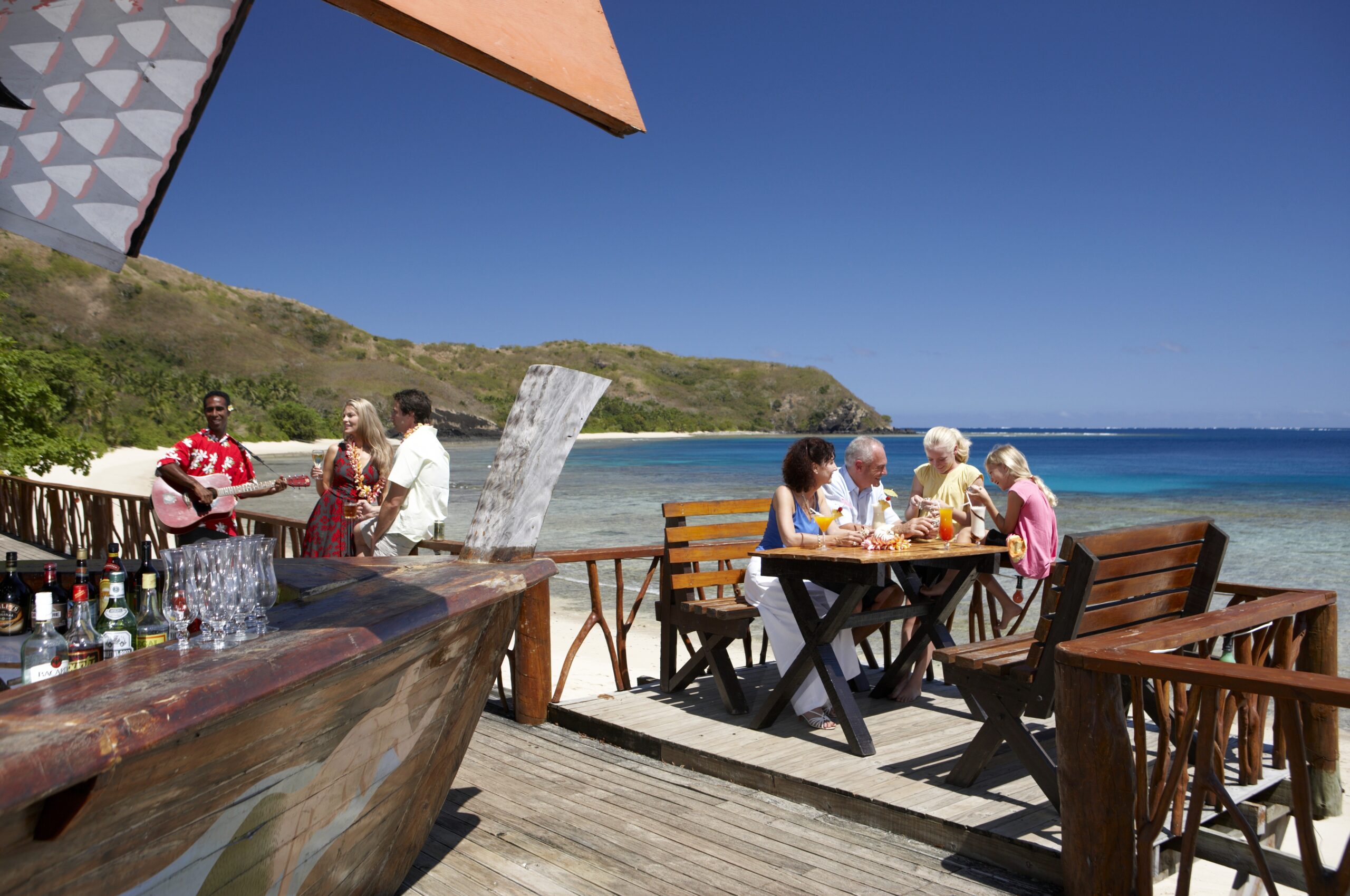
Discover the Best Time to Visit Fiji: Seasons and Weather Conditions
Are you planning a trip to Fiji but not sure when to go? Don’t worry, we’ve got you covered! This guide will help you decide on the best time to visit Fiji based on the different seasons and weather conditions.
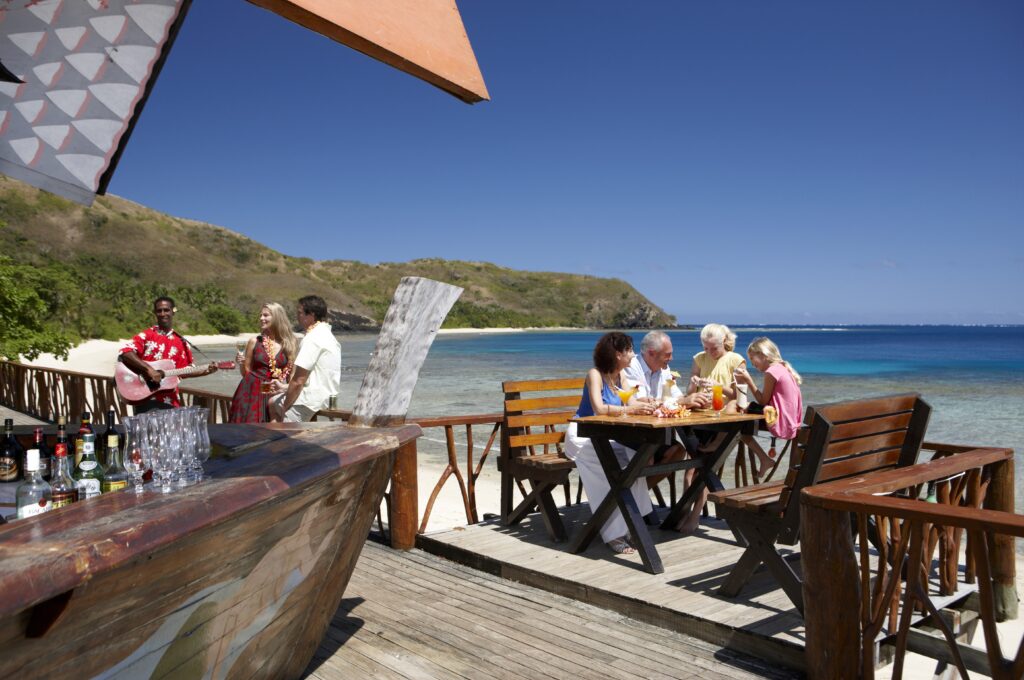
Wet season in Fiji
The wet season in Fiji, also known as summer, lasts from November to April. During this time, you can expect the most rainfall, high temperatures ranging from 21-31°C, and high humidity. While it may be less appealing to tourists due to the risk of heavy flooding and cyclones, it’s worth noting that the climate can vary in different parts of Fiji. For example, it may rain heavily in Suva but the skies will be clear in Nadi , giving you a chance to explore even in the summer season.
Dry season in Fiji
On the other hand, the dry season, also known as winter, lasts from May to October. This is the perfect time to visit Fiji for a beautiful vacation. The temperatures during this time range between 16-28°C, and there’s no rainfall. It’s an ideal time for activities like hiking and surfing , and divers and snorkelers will have a great time exploring the coral reefs. You can relax by the beach without having to worry about getting wet or becoming sick. You may want to bring a light cardigan as the winds can pick up by the evening.
Cheapest time to visit Fiji
If you prefer a quieter and more budget-friendly visit, consider traveling during the shoulder seasons, which fall between the wet and dry seasons. May and October are transitional months with favourable weather and fewer tourists. During this time, you can still enjoy warm temperatures and engage in outdoor activities, while also benefitting from reduced accommodation rates and less crowded attractions.
Best time to visit Fiji
While you can visit Fiji all year long, it’s best to plan your trip during the dry season from May to October. During this time, you’ll have endless opportunities to explore and live the Fijian way. It’s a peak season for tourists, so airfares and resort rates will be relatively expensive. However, if you’re coming during the off-peak season, which is the wet season, you’ll be seeing fewer crowds, and airfares and resort rates will be lower. Rainfall patterns are short, and the sun shines bright in some parts of the island. You can still have fun during the wet season, and it’s a pocket-friendly option.
Check out what are the popular festivals in Fiji .
In summary, visit Fiji during the dry season for the best experience, but don’t discount the wet season as it has its own unique advantages. Whatever season you choose, Fiji is a beautiful destination with plenty to offer!
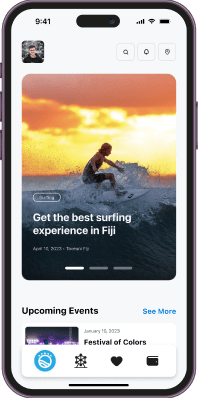
More Articles
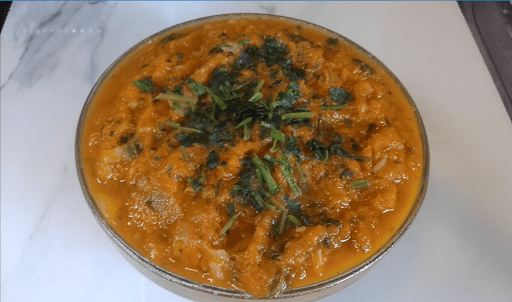
How to make Fijian pumpkin curry
March 29, 2024
Pumpkin curry is a flavourful and comforting dish that is enjoyed in many cuisines around the world. This vegetarian curry ...
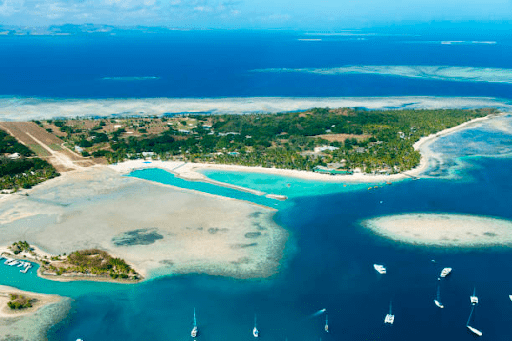
Fun Facts and Frequently Asked Questions about Fiji
March 27, 2024
Where is Fiji located? Fiji is an archipelago located in the South Pacific Ocean, about 2,000 kilometres northeast of New ...

Traveling to Fiji from New Zealand
March 25, 2024
Planning a trip to Fiji from New Zealand? Look no further! In this article, we’ll provide you with all the ...
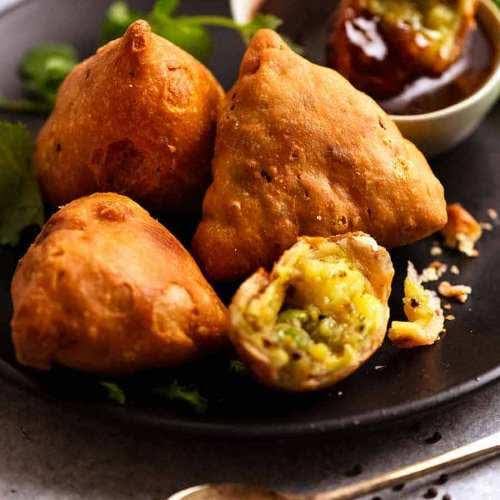
How to make Fijian samosas
March 22, 2024
Samosas are a popular and mouth-watering Indian snack that has gained popularity worldwide. These crispy, triangular pastries filled with a ...
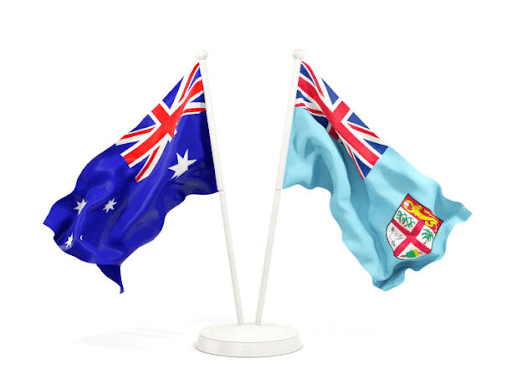
Traveling to Fiji from Australia
March 20, 2024
Planning a trip to Fiji from Australia? Look no further! In this article, we’ll provide you with all the details ...
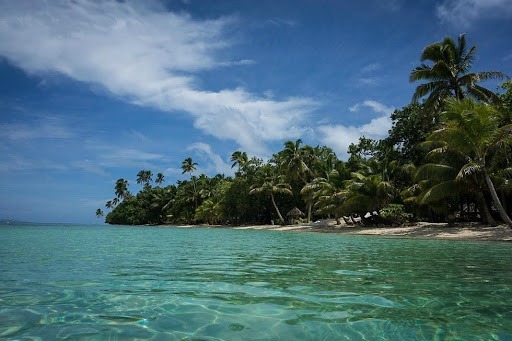
How to Explore Lomaiviti Island on A Budget
March 18, 2024
Lomaiviti Island, located in Fiji, is a perfect destination for budget travellers looking for a tropical paradise without breaking the ...

Fijian Lamb Rourou Recipe
March 15, 2024
Lamb rourou is a traditional Fijian dish that combines tender lamb with the flavours of taro leaves and coconut milk. ...

Best Sunset Spots in Fiji
March 13, 2024
Here’s a guide to some of the most breath-taking locations where you can catch those amazing sunsets: Sunset Beach, Sigatoka: ...

- About GoFiji
- Fiji Travel Guide
- Deals & Promotions
- Events & Festivals
- Become a Partner
- Privacy Policy
Download GoFiji Mobile App

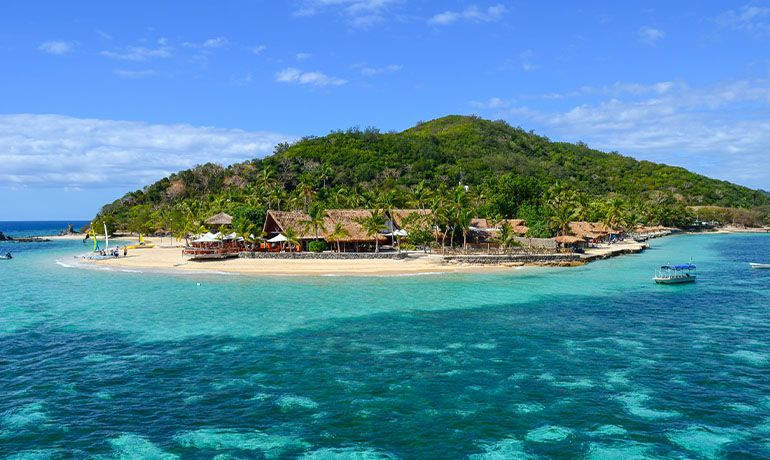
Best Time To Visit Fiji: Climate & Travel Guide | Marchay
Bula! This local salutation is likely the first thing you hear once you touch down in the island paradise known as Fiji. Plan a getaway to this South Pacific destination where you’ll be immersed in the island’s natural beauty and pulsating culture, and learn the true meaning of what it means to be on ‘Fiji Time.’
If Fiji is on the top of your bucket list, you’re likely wondering when is the best time to visit. Find out what to expect when visiting Fiji during the dry vs. wet season, activities to add to your itinerary, and how to make your dream Fiji vacation become a reality.
Table of Contents
When Is The Best Time To Visit Fiji?
Fiji is characterized by two seasons, dry season and wet season. Fiji has thriving tourism all year round. However, some times of year are better to visit than others if you want to maximize your time between its islands.
The best time to visit Fiji is during the dry season. The dry season lasts from May to September. These months have the ideal weather of clear, sunny skies, warm temperatures, and little rainfall, making it feel like paradise.
The dry season spans across the fall and winter in Fiji. If you’re looking for a more laid-back travel experience to indulge in ‘Fiji Time,’ it’s recommended to visit in the fall shoulder months when there are fewer crowds. However, since the weather is still transitioning, there can still be days of rain or high humidity. If crowds aren’t a concern and instead you want to experience the best Fiji weather, the winter season is the best travel time.
Some travelers may prefer to visit Fiji during the wet season. The only downside to the wet season is the chance of rainstorms, which occur daily but are short-lasted. Spring falls within the wet season but features many popular festivals.
When Is The Worst Time To Visit Fiji?
When most people think about Fiji, they imagine the idyllic island weather with clear waters and skies while lounging all day on the beach or enjoying cultural activities with the local Melanesian peoples. And while this sounds like paradise, Fiji isn’t like this all year long. There are times of the year when many people avoid traveling to the island due to the change in weather patterns that can affect your trip itinerary.
The worst time to visit Fiji is during the rainy season, from October to April. The wet season typically has heavy rain showers every day during the afternoon. Along with the rain, the waters have less visibility for popular activities like snorkeling. Although a rare occurrence, Fiji experiences cyclones. December is the worst month to visit Fiji because it has the highest chance of cyclones hitting the island.
Since the rain is brief, some travelers prefer to visit Fiji during the wet season. Fiji’s busiest travel season during the dry winter can be unfavorable for travelers looking to avoid big crowds at the resorts or on the beaches.
Visiting Fiji In The Spring
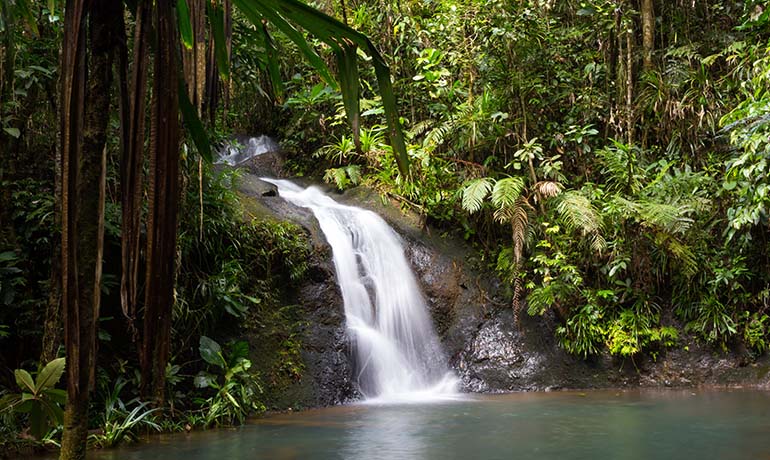
Spring in the southern hemisphere occurs during the months of October to December. These months fall within Fiji’s wet season. The most noticeable characteristic of these months is the daily rain showers across the islands. However, it can still be a great time to visit and enjoy one of the most festive times of the year.
With spring following the cooler winter months, visitors can expect temperatures to rise and the days to get longer. Spring typically has average temperatures in the low-mid 80s and low temperatures in the 70s.
The wet season creates daily rainstorms during the afternoons in Fiji. These showers typically only last for an hour before returning to the normal sunny days. If you have activities planned during the day, be sure to account for the brief change in weather. However, it usually won’t alter plans too much!
Tourism in Fiji begins to slow during the spring. Up until mid-October is the high season. It’s a great time to experience the true ‘Fiji Time’ and participate in the numerous countrywide celebrations. Spring is a popular time for events, including the Diwali Festival of Lights and Fiji Day in October or the month-long holiday and New Year celebrations in December.
Visiting Fiji In The Summer
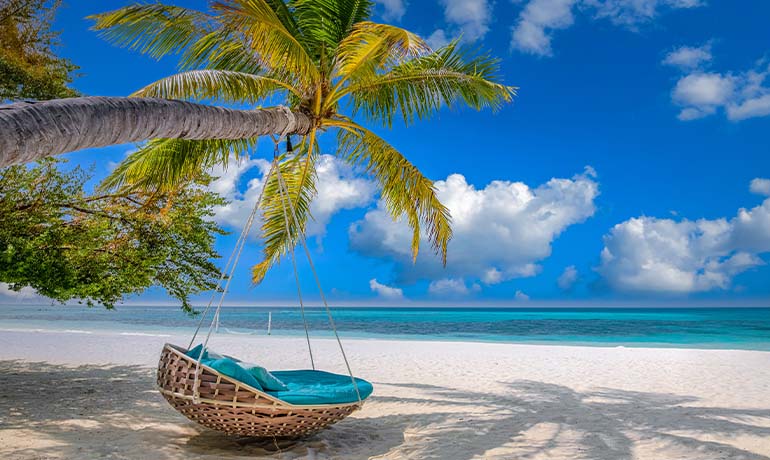
Summer in Fiji occurs in the middle of the wet season. The summer months of January to March receive the most rainfall. These heavy tropical storms increase the chance of cyclones, although they don’t happen often.
Fiji’s summers are a mix of the hottest and wettest times of the year. Temperatures can reach over 90 °F during the day and remain in the 80s at night. January is the hottest month in Fiji. The daily rain showers significantly increase the humidity, so days can feel even warmer.
Summer is the low season for travel since most travelers prefer other favorable weather conditions during their trip. If you’re visiting during these months, there are a few benefits. Summer has the longest days out of the year, with over 13 hours of sunlight. Also, it’s a great time to visit the many waterfalls in Fiji to see them flowing at their maximum capacity.
The top of the year experiences many local religious Hindu festivals, most notably the color-filled Holi Festival.
Visiting Fiji In The Fall
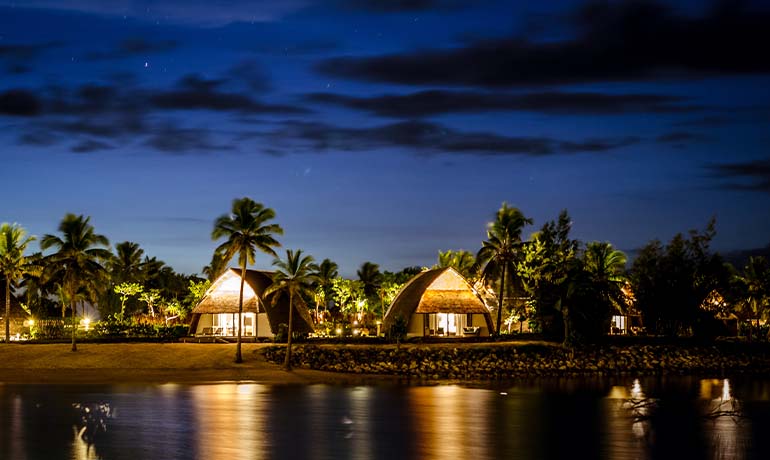
Fall is one of the transitional months in Fiji, where it shifts from the hot, wet summer to the cool, dry winter. These shoulder months of April to June are some of the best times to visit Fiji. You’ll benefit from the changing weather to favorable conditions while avoiding the tourist crowds that arrive during the latter months.
The wet season ends in April, so you’ll start to see a dramatic change in the weather during this month. Temperatures drop below the 90-degree heatwaves in March, and the daily rainstorms begin to settle. However, visiting in April can still have weather similar to winter if visiting earlier in the month.
May is one of the best times to visit Fiji. The weather resembles the islands’ summer temperatures, and it occurs just before the peak season. June, the end of the fall, is the start of peak travel season.
Travelers looking to enjoy outdoor activities in Fiji should consider visiting during the fall. The long days give plenty of time to spend outdoors with an average of 10-11 hours of daylight. In addition, it’s a popular time for music festivals, such as the International Jazz and Blues Festival in May and the World Music Festival in June.
Visiting Fiji In The Winter
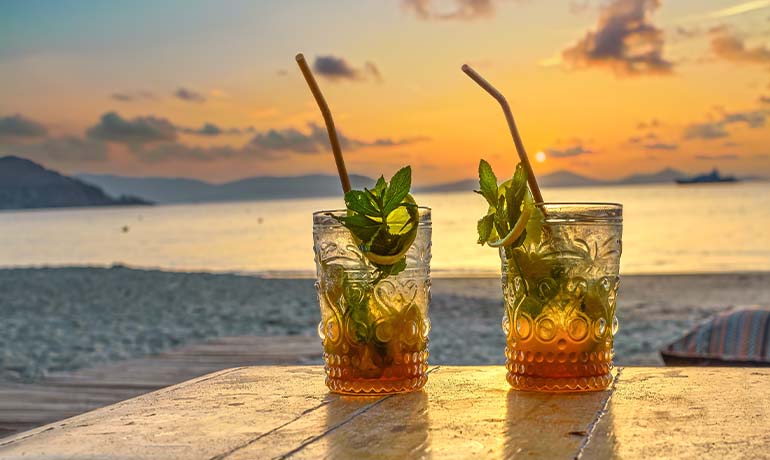
Winter in Fiji is unlike what most people think about. Because for this island chain, it’s the time of year when it experiences the best weather and, as a result, is the most popular time to visit. Since Fiji is in the southern hemisphere, winter occurs from July to September.
The peak season in Fiji is during the winter, when it receives most of its international visitors. It coincides with the holiday travel season for many Australians and New Zealanders, amongst many other international visitors.
The dry season is in full effect during the Fiji winter. You can expect clear skies and comfortable temperatures in the mid-80s during the day and the high 60s at night. In addition, it has little rainfall and humidity. Thanks to the weather conditions, it’s the ideal time to enjoy outdoor activities like snorkeling, hiking, or daytime excursions without the threat of a mid-day rainstorm. In summer, you can also enjoy the famous week-long Bula Festival happening in July or August every year and the Fiji Regatta Week in September.
With its perfect tropical climate, Fiji because very busy in the winter. Its resorts, tours, private islands, and other activities are frequently booked. We assist our Marchay Members in preparing for their trip to ensure they fill their itineraries with the experiences they’re hoping for.
Join Marchay
For travelers who want a bespoke, personalized travel experience, get in touch with an experienced Marchay Travel Advisor to guide and plan all your traveling needs.
Attractions & Things To Do In Fiji
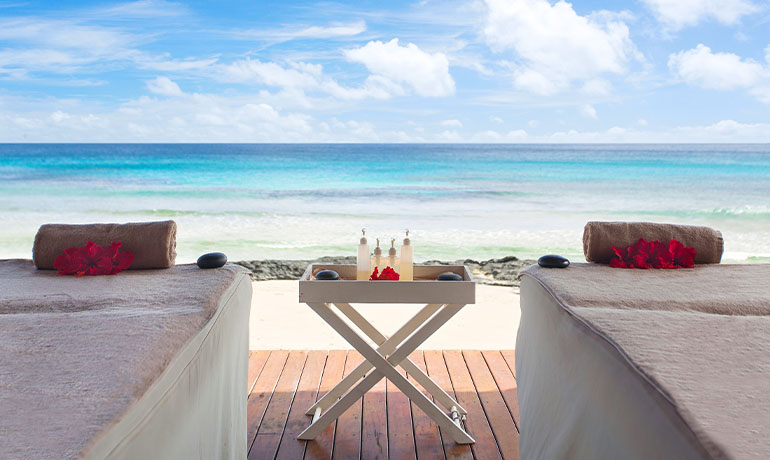
#1. Trek Through Sigatoka Sand Dunes National Park
The Sigatoka san Dunes National Park is one of the smallest in the world but home to some of Fiji’s largest dunes. Hiking trails along these coastal dune landscapes rise to 60-meters tall, providing views overlooking the Viti Levu Island coast.
#2. Participate In A Kava Ceremony
Visit Turtle Island to immerse in one of the most famous local traditions — the Kava Ceremony. Kava is a traditional Fijian dish made from the yaqona root. Watch as the locals grind the root into a communal bowl which is then passed around for everyone to take a drink. Its mild sedative effects make you feel relaxed and truly settle into Fiji Time.
#3. Catch A Big Wave At Cloudbreak
Seasons surfers flock to Fiji every year during the fall and winter months to put their skills to the test at Cloudbreak. This world-famous surf spot has some of the most consistent waves that reach heights of 25-ft and beyond.
#4. Iguana Spotting At Kula Wild Adventure Park
Families will have hours of fun in Fiji’s Kula Wild Adventure Park in Viti Levu. Stroll the pathways between the zip-ling course and water park. Keep your eyes out for crested iguanas walking the same paths that are friendly enough to hold.
#5 Explore The Great Astrolabe Reef
Climb into your wet suit and put on your flippers to explore offshore Kadavu Island in the Great Astrolabe Reef. It’s one of the best places for diving in Fiji, where you’ll swim alongside marlin, sharks, giant trevally, and more.
#6. Scuba Diving in Beqa Lagoon
Fall and winter are the best seasons to explore the coral coast of the Island of Beqa, one of the largest barrier reefs in the world. Scuba dive offshore to swim among the vibrant marine life like reef sharks, explore underwater shipwrecks, and see why it’s nicknamed the ‘Soft Coral Capital of the World.’
#7. Swim With Manta Rays
Dive beneath the surface in the Nanuya Balavu and Naviti Island channels to witness the majestic Manta Rays seemingly ‘fly’ through the water while flapping wings spanning up to six meters wide!
#8. Zipline Through Fijian Canopies
Reach top speeds while zipping over Fiji’s lush jungles in the Sabeto Valley with Sleeping Giant Zip Line. You’ll glide between bases while enjoying views of the verdant landscapes just outside of Nadi, the largest island.
#9. Explore The Oho Caves
Take a Tao Village Tour where local guides take you on a walk through time into the Oho Caves, where their ancestors lived more than 4,000 years ago.
#10. Visit A Traditional Salt Factory
The locals at Vusama Village invite visitors to see firsthand how they produce salt. Tours of their traditional salt factory reveal behind the scenes how salt gets cultivated, harvested, and processed for enjoying in popular dishes like the Kokoda.

#11. Stroll Through The Garden Of The Sleeping Giant
Colorful flowers bloom across the 20 hectares of the Garden of the Sleeping Giant during the island’s wet season. Travel to the Nausori Highlands to see more than 2,000 species of orchids and other native Fiji plants.
#12. Jet Boat Safari Through Sigatoka River
Immerse yourself in Fiji’s history as an expert guide narrates the journey down the Sigatoka River. The award-winning tour lasts a half-day where you’ll cross the coastal town of Sigatoka and navigate with stops at other riverside Fijian Villages, which also use the river as a major transportation system.
#13. Rafting Through The Upper Navua River
Splash your way through the choppy waters of the Upper Navua River as you paddle your way through the Upper Navua Gorge. The river is filled with tons of surprises and thrills while providing scenic views of a thick rainforest surrounding you.
#14. Unwind On Denarau Island
Every hour is Fiji Time on Denarau Island as you delight yourself in the idyllic scenery of Fiji paradise. Whether you want to enjoy water activities like swimming and kayaking, enjoy local entertainment, or witnessing its famous sunsets, there’s always a place for you on the island.
The Bottom Line
Fiji is truly the island paradise that makes the idyllic vacation getaway. With over 300 islands lined with white sand coasts and lush interiors, it’s a place that entices visitors to relax, unwind, and discover the island’s beauty.
We help our Marchay members plan the perfect trip, where you’ll have ideal weather for enjoying all the wonders of the Fiji islands. There is always a reason to visit Fiji, and you now have the necessary resources to find yours. So, make Fiji your next travel destination and see why it’s always considered one of the most beautiful, exotic places in the world.
Frequently Asked Questions
How many days do you need in fiji.
Fiji is a popular travel destination with international visitors arriving from all parts of the world. Many travelers begin their journey on the main island, Nadi, but there are more than 300 other islands to explore. Depending on what you want to do while visiting Fiji, you might have to travel between islands, which can be a short boat ride or even an airplane trip.
While planning your Fiji trip, visit for at least a week. One week is enough time to enjoy all of the best parts of Fiji, including relaxing on the resort beaches, visiting the capital Suva, and traveling to other islands like Vanua Levu and Taveuni. Keep in mind not to fill up your entire itinerary with activities to allow time for relaxation and to take things slowly during your stay — something the locals like to refer to as “Fiji Time.”
What should you avoid in Fiji?
Fiji often comes to mind when you think about a picture-perfect island destination. The palm tree-lined white sand beaches that touch the clear waters of the Pacific are the perfect setting for rest and relaxation. However, there are a few things to keep in mind when visiting Fiji to avoid.
One of the most important things to consider in Fiji is the weather. In addition to its wet season, certain months are considered the cyclone season. This period peaks in December and should be avoided if there are any signs of incoming cyclones.
Tourism is a major industry in Fiji. But with mass tourism comes common tourist scams. Avoid falling for common scams, which may include overcharging on tours and taxi rides, vendors, and theft.
Other things to avoid in Fiji can be culture-related. For example, in some communities, it’s required that your shoulders and knees are covered. Be sure to respect these customs when visiting local villages and religious sites.
What is the best month to visit Fiji?
Tourism in Fiji peaks during the winter, but is it the best time to visit Fiji? If you’re looking for the best weather for enjoying the outdoors, this is the best time to visit the island. Fiji is located in the southern hemisphere, so its winter occurs during the months of July to September.
Although the peak travel time, winter can get crowded with tourists who flock to the island to take advantage of the most beautiful time of year. The best overall month to visit Fiji is in May, which is the start of the dry season, but right before the large crowds arrive. It gives the best of both worlds for enjoying the great weather and the quiet of the island.
Marchay Member Travel
15+ nights in 5* hotel
Private, First or Business Class fights
Minimum $25,000 travel spend /year
One large vacation /year
Loves travel and discovery
- Bizarre Travel Stories
- Budget Friendly Travel
- Eco-Friendly Travel
- Packing Tips
- Points + Miles
- Travel Advisory + Alerts
- Travel Trends
- Cocktails + Spirits
- Dishes + Entertainment
- Restaurants
- Best Accessories
- Style + Fashion
- Travel Bags
- Travel Tech
- Animals Travel + Updates
- Celebrity Travel Alerts
- Meditation + Health
- Traveler Job Ideas
- Best Travel Guide
- Saving Tips
- Top Festivals
- Travel + Manners
- Travel Advisors
- Travel Tips + Tricks
- Trip Attractions
- Weather Updates + Places
- Antarctica Vacation
- Bali Vacation
- Bhutan Vacation
- Cambodia Vacation
- China Vacation
- India Vacation
- Japan Vacation
- Myanmar Vacation
- SriLanka Vacation
- Thailand Vacation
- Vietnam Vacation
- Albania Vacation
- Armenia Vacation
- Austria Vacation
- Bosnia Vacation
- Bulgaria Vacation
- Croatia Vacation
- Czech Republic Vacation
- Denmark Vacation
- England Vacation
- France Vacation
- Germany Vacation
- Greece Vacation
- Hungary Vacation
- Iceland Vacation
- Ireland Vacation
- Italy Vacation
- Latvia Vacation
- Montenegro Vacation
- Norway Vacation
- Poland Vacation
- Portugal Vacation
- Romania Vacation
- Scotland Vacation
- Slovenia Vacation
- Spain Vacation
- UK Vacation
- Ukraine Vacation
- Argentina Vacation
- Belize Vacation
- Brazil Vacation
- Cancun Vacation
- Chile Vacation
- Colombia Vacation
- CostaRica Vacation
- Cuba Vacation
- Ecuador&Galapagos Vacation
- Hawaii Vacation
- Los Cabos Vacation
- Montego Bay Vacation
- Patagonia Vacation
- Peru Vacation
- Punta Cana Vacation
- Egypt Vacation
- Israel Vacation
- Turkey Vacation
- Australia Vacation
- Bora Bora Vacation
- Fiji Vacation
- New Zealand Vacation
- Tahiti Vacation
- South Africa
- Czech Republic
- Spain&Morocco
- Ecuador&Galapagos
- Montego Bay
- New Zealand
- Kenya Tours
- Madagascar Tours
- Mauritius Tours
- Morocco Tours
- Namibia Tours
- Seychelles Tours
- South Africa Tours
- Tanzania Tours
- Zimbabwe Tours
- Antarctica Tours
- Bhutan Tours
- Cambodia Tours
- China Tours
- India Tours
- Japan Tours
- Malaysia Tours
- Myanmar Tours
- Singapore Tours
- SriLanka Tours
- Thailand Tours
- Vietnam Tours
- Albania Tours
- Armenia Tours
- Austria Tours
- Bosnia Tours
- Bulgaria Tours
- Croatia Tours
- CzechRepublic Tours
- Denmark Tours
- England Tours
- France Tours
- Germany Tours
- Greece Tours
- Hungary Tours
- Iceland Tours
- Ireland Tours
- Italy Tours
- Latvia Tours
- Montenegro Tours
- Norway Tours
- Poland Tours
- Portugal Tours
- Romania Tours
- Scotland Tours
- Slovenia Tours
- Spain Tours
- Ukraine Tours
- Argentina Tours
- Belize Tours
- Brazil Tours
- Cancun Tours
- Chile Tours
- Colombia Tours
- CostaRica Tours
- Ecuador&Galapagos Tours
- Hawaii Tours
- Los Cabos Tours
- Mexico Tours
- Montego Bay Tours
- Patagonia Tours
- Punta Cana Tours
- Egypt Tours
- Israel Tours
- Jordan Tours
- Turkey Tours
- New York Tours
- Florida Tours
- Australia Tours
- BoraBora Tours
- New Zealand Tours
- Tahiti Tours
- Arizona Tours
- New Mexico Tours
- California Tours
- Nevada Tours
- Washington Tours
- Family Vacation
- Private Tour
- Special Interest
- Adventure Travel
- Cultural Travel
- Last Minutes Hotels
- Last Minutes Vacations
- Last Minutes Cruises
- Last Minutes Flights
- Last Minutes Car Rentals
- Botswana Safaris
- Gorilla Trekking
- Kenya Safaris
- Namibia Safaris
- Rwanda Safaris
- SouthAfrica Safaris
- Tanzania Safaris
- Uganda Safaris
- Zambia Safaris
- Zimbabwe Safaris
- Book flight
- Leisure Jets
- Alaska Cruises Travel
- Best All-Inclusive
- Caribbean Cruises
- Cruises for Family
- Disney Cruises + Destinations
- European Cruises
- River Cruises
- Amusement Park
- Beach Vacation
- Best National Parks
- Culture + Activities
- Fall Vacation + Ideas
- Holiday Tour
- Luxury Travel
- Plan Road Trip
- Romantic Places
- Solo Travel + Tips
- Spring Vacation + Tips
- Summer Vacation + Tips
- Trip Suggestion
- Weekend Getaway
- Winter Vacation + Tips
- Travel Books
- Travel sized Toiletries
- Shoes/Clothing
- Travel Apps
- Music Travel Playlist
- Personal Stylist
- Packing Lists
- Language Learning
- Travel related - Movies/TV shows
- International Airlines
- US Airlines
- Visit Island
- Latest Trends
- Destination Of The Year
- Write Review
- Start Planning
Seasonal Fiji: A Quick Guide For The Best Times To Visit

Fiji, with its pristine beaches, turquoise waters, and vibrant culture, is a dream destination for many travelers. However, to make the most of your trip to this South Pacific paradise, it's crucial to choose the right time to visit based on your travel interests. Whether you're an avid snorkeler, an island explorer, or simply seeking ideal weather conditions, this article will serve as your guide to the best time to visit Fiji for your preferred activities. From the best months for snorkeling in crystal-clear waters to the ideal time for island hopping and experiencing local festivals, we'll provide insights and tips to help you plan a memorable trip to Fiji that caters to your travel style.
Best Time to Visit Fiji for Snorkeling

Fiji boasts a stunning underwater world that is a haven for snorkelers and divers alike. The warm waters of the South Pacific Ocean are teeming with colorful coral reefs, vibrant fish species, and a myriad of marine life. With visibility often exceeding 30 meters, Fiji offers some of the clearest waters for snorkeling, providing a mesmerizing underwater spectacle. Snorkelers can encounter graceful sea turtles gliding by, majestic manta rays gracefully soaring through the currents, and an array of tropical fish darting among the corals. Fiji is also known for its soft coral dives, with intricate coral formations in a rainbow of hues that create a surreal underwater landscape. Whether you're a novice or an experienced snorkeler, Fiji's underwater world promises an awe-inspiring experience that will leave you captivated by its natural beauty.
Best Time to Visit for Optimal Snorkeling Conditions
Fiji is renowned for its remarkable snorkeling opportunities, with its crystal-clear waters and diverse marine life. To make the most of your snorkeling adventures, it's important to plan your trip during months when the conditions are optimal for underwater exploration.
Months with the Clearest Waters and Abundant Marine Life
The best time to visit Fiji for snorkeling is during the dry season, which typically runs from May to October. During these months, the waters are usually calm, with excellent visibility that can often exceed 30 meters or more, providing an unparalleled snorkeling experience. The lack of rainfall during the dry season also helps to keep the waters clear, making it an ideal time for exploring Fiji's underwater world.
Additionally, Fiji's dry season coincides with the Southern Hemisphere winter, meaning water temperatures are cooler compared to the summer months, ranging from around 23 to 27 degrees Celsius (73 to 81 degrees Fahrenheit). These cooler waters attract a plethora of marine life, including colorful coral formations, tropical fish species, and larger creatures such as sea turtles and manta rays, which thrive in nutrient-rich waters during this time.
Specific Snorkeling Spots and Their Seasonal Highlights
Fiji is home to numerous snorkeling spots that offer unique experiences and seasonal highlights. Here are some of the top spots and what to expect during the best time to visit:
The Yasawa Islands:
These picturesque islands are known for their pristine white sandy beaches and abundant marine life. Snorkeling in the Yasawa Islands during the dry season offers the chance to encounter colorful coral gardens, tropical fish, and even reef sharks. Some popular snorkeling spots in the Yasawa Islands include the Blue Lagoon, Naviti Island, and Drawaqa Island, which is famous for its resident population of manta rays that can be seen from May to October.
Taveuni Island:
Known as the "Garden Island of Fiji," Taveuni is renowned for its lush rainforests and pristine coral reefs. The island is surrounded by the Rainbow Reef, a world-famous snorkeling and diving destination. Snorkeling in Taveuni during the dry season offers the opportunity to witness the breathtaking soft coral gardens for which the island is famous, with their stunning array of colors and shapes.
Beqa Island:
Located off the coast of Viti Levu, Beqa Island is a hidden gem for snorkelers. The island is known for its clear waters and thriving marine life, including an abundance of hard and soft corals, tropical fish, and even the elusive hammerhead sharks. Snorkeling on Beqa Island during the dry season provides the best chances for encountering these magnificent creatures.
Best Time to Visit Fiji for Island Exploration

Fiji is a treasure trove of diverse islands, each with its unique offerings that cater to different travel interests. From the lush rainforests and pristine coral reefs of Taveuni Island to the luxury resorts and world-class snorkeling spots of the Yasawa Islands, Fiji's islands offer a myriad of experiences for every type of traveler. Beqa Island is renowned for its clear waters and thrilling encounters with hammerhead sharks, while the Mamanuca Islands are famous for their picturesque beaches and vibrant marine life. With over 330 islands to choose from, Fiji promises a diverse range of experiences, from adventure-filled snorkeling expeditions to tranquil beach getaways, making it a truly unparalleled destination in the South Pacific.
Things to Consider When Exploring Islands in Fiji
Weather patterns:.
Fiji experiences a tropical climate with two distinct seasons - the dry season (May to October) and the wet season (November to April). The dry season is generally considered the best time for island hopping as the weather is more stable with less rainfall and lower humidity levels. The skies are often clear, and the seas are calmer, making it easier to travel between islands and enjoy various outdoor activities. The wet season, on the other hand, can bring heavy rainfall and occasional cyclones, which may disrupt travel plans and limit access to some islands.
Accessibility to Remote Islands:
Fiji comprises over 300 islands, with some of them being more remote and less developed than others. The best time to visit for island hopping and exploration may vary depending on the accessibility of these remote islands. During the dry season, when weather conditions are favorable, most islands are easily accessible by boat or seaplane, allowing you to explore and experience the untouched beauty of Fiji's more secluded destinations. However, during the wet season, transportation to remote islands may be more challenging due to rough seas or the limited availability of services.
Festivals and Cultural Events:
Fiji has a rich cultural heritage, and various festivals and cultural events take place throughout the year, offering unique opportunities for travelers to immerse themselves in local traditions. These events can influence travel plans, as they may affect accommodation availability and transportation options. For example, the Bula Festival in July, which celebrates Fijian culture with traditional dances and competitions, may draw crowds to the main island of Viti Levu. Similarly, the Fiji Hibiscus Festival in August, known for its beauty pageants, live music, and food stalls, can impact travel plans to the capital city of Suva. Planning your trip during these events can provide an enriching cultural experience, but it's essential to consider the availability of accommodations and transportation during these peak times.
Best Time to Visit Fiji for Weather

Fiji's climate is characterized by tropical weather, with warm temperatures throughout the year. However, there are distinct seasonal variations that travelers should consider when planning their visit. Fiji experiences two main seasons - the wet season and the dry season - which can significantly impact the weather conditions and overall travel experience.
Fiji's climate and seasonal variations
Fiji's wet season generally occurs from November to April, with heavy rainfall, high humidity, and the possibility of tropical cyclones. The wet season can result in muddy trails, flooded roads, and limited outdoor activities, which may not be ideal for travelers seeking sunny and dry weather. On the other hand, Fiji's dry season typically runs from May to October, offering generally more favorable weather conditions with lower humidity, cooler temperatures, and less rainfall.
Best time to visit for favorable weather conditions
To avoid the rainy and cyclone seasons, the best time to visit Fiji for optimal weather conditions is during the dry season from May to October. These months typically offer pleasant temperatures ranging from 22 to 30 degrees Celsius (71 to 86 degrees Fahrenheit), lower humidity levels, and fewer chances of rainfall. The skies are often clear, making them ideal for outdoor activities and water sports.
Rainy and Cyclone Seasons to Avoid
Fiji's wet season, which occurs from November to April, is characterized by high humidity, frequent rainfall, and the potential for tropical cyclones. The heavy rainfall during this period can lead to muddy trails, flooded roads, and limited outdoor activities. Additionally, tropical cyclones can occur, causing disruptions to travel plans and posing safety risks. Hence, it's best to avoid visiting Fiji during the wet season if you're looking for optimal weather conditions.
Months with pleasant temperatures and low humidity
The dry season in Fiji, which spans from May to October, is the best time to experience pleasant temperatures with lower humidity levels. During these months, temperatures typically range from 22 to 30 degrees Celsius (71 to 86 degrees Fahrenheit), providing comfortable weather for outdoor activities and exploration. The humidity is generally lower compared to the wet season, making it more comfortable for travelers to engage in various activities without feeling too sticky or sweaty.
Activities and accommodations suitable for the recommended months
The dry season in Fiji offers excellent weather conditions for a wide range of outdoor activities and accommodations that cater to different travel styles.
Beach activities, sunbathing, and water sports
The dry season is perfect for beach activities, sunbathing, and water sports such as snorkeling, scuba diving, kayaking, and surfing. The clear skies and calm waters during this period provide ideal conditions for these activities, allowing travelers to enjoy Fiji's beautiful beaches and turquoise waters. The dry season is also an excellent time for sunset cruises, island hopping, and exploring Fiji's stunning marine reserves.
Types of accommodations and their availability
During the dry season, Fiji's resorts, hotels, and guesthouses are generally more accessible and offer a wider range of options. From luxury resorts with overwater bungalows to budget-friendly accommodations, travelers can find a variety of options to suit their preferences and budgets. It's advisable to book accommodations in advance during this period, as availability may be limited due to the high demand.
The best time to visit Fiji largely depends on your travel preferences and desired weather conditions. Fiji's dry season from May to October offers pleasant temperatures, lower humidity, and less rainfall, making it the peak season for optimal weather. During this time, travelers can enjoy a wide range of outdoor activities and water sports and explore Fiji's stunning beaches and marine life. Accommodations are also more readily available during the dry season, although booking in advance is recommended due to high demand. On the other hand, Fiji's wet season from November to April is considered the off-peak season, with higher chances of rainfall, humidity, and potential cyclones. However, visiting during the wet season may also offer opportunities for unique experiences, such as lush green landscapes and fewer crowds. Overall, careful consideration of Fiji's weather patterns and seasonal variations can help you plan the best time to visit based on your preferred travel style and interests.
When is the best time to visit Fiji weather-wise?
The best time to visit Fiji weather-wise is during the dry season from May to October, with pleasant temperatures, lower humidity, and minimal rainfall.
What is the high tourist season in Fiji?
The high tourist season in Fiji generally falls during the dry season from May to October, when weather conditions are favorable for outdoor activities and water sports.
How does Fiji's weather change throughout the year?
Fiji's weather changes throughout the year, with a wet season from November to April, characterized by high humidity and heavy rainfall, and a dry season from May to October, offering pleasant temperatures and lower humidity levels.
What are the peak and off-peak seasons in Fiji?
The peak season in Fiji is during the dry season from May to October, while the wet season from November to April is considered the off-peak season.
Our private tours typically range from $500 - $1000 per person/per night depending on chosen hotels and room categories, vehicles used, types of tours, flight cost, time of year and other factors. Make an inquiry for a customized trip quote.
Learn more about leisure plans
1888-509-1184.

Signup for Exclusive Deals
Exclusive access to private sales, customized specials & more
Best time to visit Fiji

Fiji is a year-round destination with warm temperatures and plenty of sunshine throughout the year. The most popular time to visit is between May and October when the weather is at its best – think blue skies, low humidity and little rain. The monsoon season (November to April) coincides with the off-season, but for travellers who don't mind a few downpours, it's a great time to explore without big crowds (excluding December which sees a rush of holiday season tourists).
Travelling in the shoulder months is also a good option as the weather isn't too wet and crowds are fairly thin.
July and August typically offer the best weather. The average temperature lingers at 26°C and rain is minimal. Expect bigger crowds and higher accommodation prices during these months as they coincide with the winter school holiday period in Australia and New Zealand.
The rain tapers down in April and is almost gone by May. Plus, you’ll avoid the influx of Australian and New Zealand tourists who flock to Fiji for some winter sun. You could also visit in November before the festive rush. It might be a little wet, but this makes the waterfalls even more spectacular.
The water is warm all year, but the wet season rain can reduce water visibility and make it harder to see all the colourful underwater critters. If you’re keen to jump in and explore Fiji’s underwater world, you'll probably want to book your trip in the dry season – ideally between June and October.
Fijians have a rich culture. If you're looking to learn about traditional customs, you could align your trip with one of these festivals:
Hibiscus Festival (August): a nine-day community celebration in Suva with traditional music, food stalls and the crowning of the ‘Hibiscus Queen'.
Bula Festival (July/August): a week-long festival in Nadi to celebrate Fijian culture with colourful floats, music, feasting and dancing.
South Indian Fire Walking Festival (July/August): a popular Indo-Fijian event that signifies the end of 10 days of abstinence to worship the goddess Maha Devi.
Lautoka Sugar Festival (September): a festival held in Lautoka, AKA 'Sugar City' to party and celebrate this prosperous trade.
Learn more about festivals in Fiji
Like other South Pacific nations, Fiji has a tropical maritime climate with balmy temperatures that rarely dip below the low 20s°C. There are two seasons: a dry season (May to October) and a wet season (November to April). The wet season is hot and sticky with torrential, but often brief, downpours, with January through March being the wettest period.
The water temperature ranges between 25-30°C. If you want to go snorkelling or diving, the dry season is best as heavy rainfall can affect water visibility.
Hot, humid weather in January and February creates ideal conditions for tropical cyclones. Cyclones may result in heavy rainfall, gale-force winds, storm surges and flooding. Fiji has a great weather warning system in place and there are plenty of local alerts to stay safe.
Let's create an exclusive trip for your group.
Best places to travel in May
10 reasons to visit Samoa
Fiji vs Vanuatu: great beaches and great experiences
8 unique experiences in Papua New Guinea
The 5 best things to do in Vanuatu
5 bucket list-worthy things to do in New Caledonia
5 of the best New Caledonian beaches to get some sun on
Choosing the perfect island for your Pacific adventure: Solomon Islands, Papua New Guinea or Fiji?
The Best Time to Visit Fiji for Weather, Safety, & Tourism
The best times to visit Fiji for ideal weather are
June 18th to September 16th
based on average temperature and humidity from NOAA (the National Oceanic and Atmospheric Administration). Read below for more weather and travel details.
Fiji Travel Guide
Temperature.
- Perceived Temperature
- Rain and snow
- Humidity and wind
- The busiest and least popular months
- Overall travel experience by time of year
Other Fiji Travel Info
Weather in fiji.
Average temperatures in Fiji vary very little. Considering humidity, temperatures feel hot all year with a chance of rain throughout most of the year. The area is far less temperate than some — in the 6th percentile for pleasant weather — compared to tourist destinations worldwide. Weeks with ideal weather are listed above . If you’re looking for the very warmest time to visit Fiji, the hottest months are February, January, and then March. See average monthly temperatures below. The warmest time of year is generally early February where highs are regularly around 87.8°F (31°C) with temperatures rarely dropping below 75.4°F (24.1°C) at night.
Fiji Temperatures (Fahrenheit)
Fiji temperatures (celsius), “feels-like” temperatures.
The way we experience weather isn’t all about temperature. Higher temperatures affect us much more at higher humidity, and colder temperatures feel piercing with high winds. Our perceived temperatures factor in humidity and wind chill to better represent how hot or cold the day feels to a person.
Fiji Perceived Temperature (F)
Fiji perceived temperature (c), average fiji temperatures by month.
Daily highs (averaged for the month) usually give the best indication of the weather. A significantly lower mean and low generally just means it gets colder at night.
Show Fahrenheit
Show celsius, precipitation (rain or snow).
If dry weather is what you’re after, the months with the lowest chance of significant precipitation in Fiji are July, August, and then June. Note that we define “significant precipitation” as .1 inches or more in this section. The lowest chance of rain or snow occurs around early July. For example, on the week of July 2nd there is 1 day of precipitation on average. By contrast, it’s most likely to rain or snow in mid February with an average of 3 days of significant precipitation the week of February 19th.
Chance of Precipitation
The graph below shows the % chance of rainy and snowy days in Fiji.
Snow on the Ground
The graph below shows the average snow on the ground in Fiji (in).
Average Rain and Snow by Month
Show inches, show centimeters, humidity and wind.
Fiji has some very humid months, and high humidity throughout the year. The least humid month is July (72.5% relative humidity), and the most humid month is February (79.9%).
Wind in Fiji is usually calm . The windiest month is August, followed by July and September. August’s average wind speed of around 6.4 knots (7.4 MPH or 11.8 KPH) is considered “a light breeze.” Maximum sustained winds (the highest speed for the day lasting more than a few moments) are at their highest in late November to early December where average top sustained speeds reach 10.7 knots, which is considered a gentle breeze.
Relative Humidity (%)
The graph below shows the average % humidity by month in Fiji.
The graph below shows wind speed (max and average) in knots.
Average Wind Speeds
Show wind speeds.
All wind speeds are in knots. 1 knot = 1.15 MPH or 1.85 KPH.
Show Relative Humidity by Month
Is it safe to travel to fiji.
Our best data indicates this area is generally safe. As of Dec 04, 2023 there are no travel advisories or warnings for Fiji; exercise normal security precautions. Check this page for any recent changes or regions to avoid: Travel Advice and Advisories . This advisory was last updated on Nov 16, 2023.
The Busiest and Least Crowded Months
The busiest month for tourism in Fiji is May, followed by January and July. Prices for hotels and flights will be most expensive during these months, though you can save if you purchase well in advance. Tourists are unlikely to visit Fiji in December. Those willing to visit at these times will likely find it the least expensive month.
Estimated Tourism by Month
Most popular months to visit, overall fiji travel experience by season, fall (march through may).
Humidity and temperatures combine to make this season feel warm. Highs range from 87.4°F (30.8°C) and 82.6°F (28.1°C) with colder temperatures in the later months. Rain is somewhat common with 6 to 10 days of significant precipitation per month. Fall is the second busiest for tourism, which makes it a good time for those looking for things to do.
Winter (June through August)
The middle-year months have very comfortable weather with high temperatures that are comfortable. These months see the least precipitation with 4 to 5 days of precipitation per month. June – August is the busiest season for tourism in Fiji, so lodging and other accommodations may cost more than usual.
Spring (September through November)
Spring daily highs range from 84.9°F (29.4°C) and 81.9°F (27.7°C), which will feel very nice given the humidity and wind. It rains or snows a significant amount: 5 to 7 days per month. Tourism is the slowest during these months due to the weather, so hotels may be affordably priced.
Summer (December through February)
Weather is perfect this time of year in Fiji to be enjoyable for warm weather travelers. The average high during this season is between 87.8°F (31°C) and 85.1°F (29.5°C). On average, it rains or snows a fair amount: 7 to 9 times per month. These times of year are fairly slow with tourists.
Best Times to Travel › Fiji
Similar Destinations
- Poum, New Caledonia
- Ouaco, New Caledonia
- Hienghene, New Caledonia
- Kone, New Caledonia
- Poindimie, New Caledonia
- Bourail, New Caledonia
- New Caledonia
- Ouvea, New Caledonia
- Sarramea, New Caledonia
- Espiritu Santo, Vanuatu
Popular Destinations
- Manila, the Philippines
- Boston, MA, US
- Sihanoukville, Cambodia

Best Time to Visit Fiji: Month by Month Breakdown
Fiji is a tropical paradise, and this idyllic archipelago in the South Pacific can be visited any time of the year if you’re looking for hot weather and an escape from the cold.
The country enjoys beautifully warm weather regardless of the season, and it’s a popular place to visit for anyone looking for winter sun.
Fiji does have a wet and a dry season, but unlike other parts of the Pacific, it’s only rarely hit by cyclones in the worst of the wet season.
The wet season runs from November to April, and this is when Fiji is hot and humid. You can expect rainfall but it’s often short, although fierce, and it’s a good time to visit for lower prices and quieter tourist spots.
The best time to visit Fiji is in the dry season, which coincides with winter. This is from May to October, and you can expect beautiful, warm weather, and clear skies. This is also the peak season of course, and prices can be much higher.
To help you to plan your Pacific getaway, here’s our month by month guide to choosing the best time to visit Fiji.
Don’t leave home without: Lonely Planet Fiji (Travel Guide)
Table of Contents

January in Fiji
January is the middle of the wet season in Fiji, and that means that it’s also the height of summer.
Temperatures rise well above 30 degrees Celsius and remain hot even through the night, which can be an uncomfortable experience if you’re not used to dealing with constant humidity.
January is a popular time though despite the heat because many Europeans or North Americans will visit to escape the cold of winter back home.
It’s also one of the busiest times outside of the dry season because many Australians and New Zealanders visit too, in order to enjoy their Christmas and New Year holidays.
It can be an expensive place to visit in January and it’s not the best time to visit Fiji if you are on a budget.
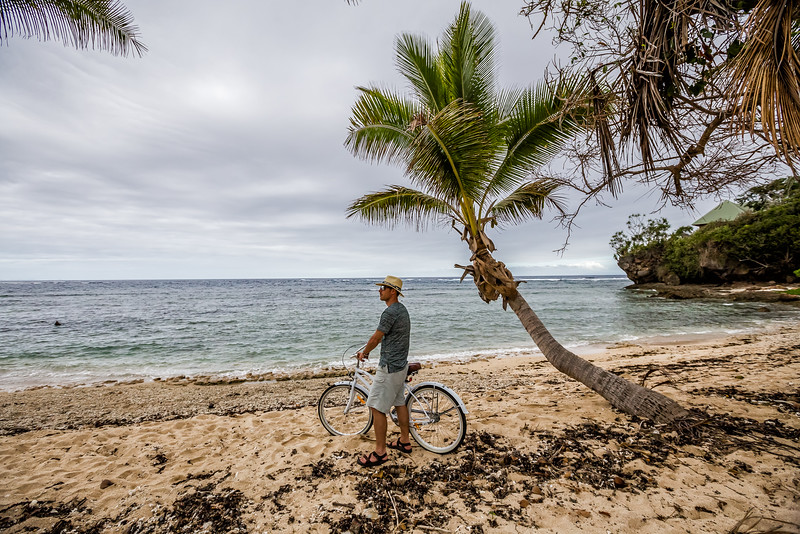
February in Fiji
February is also the middle of the rainy season, but this is the best time to visit Fiji if you’re looking for a bargain resort getaway.
The flights to Fiji tend to be much cheaper in February, and because this is low season, the hotel deals can be fantastic.
It’s so much quieter than January but the weather remains the same, with lots of heat and humidity.
You can expect to be caught in frequent rain showers, but generally speaking, these are usually short, although very fierce. Pack the raincoat and umbrella for February.
February is the best time to visit Fiji if you’re looking to see the waterfalls at their best because the swimming areas and the drops are powerful after heavy rainfall.
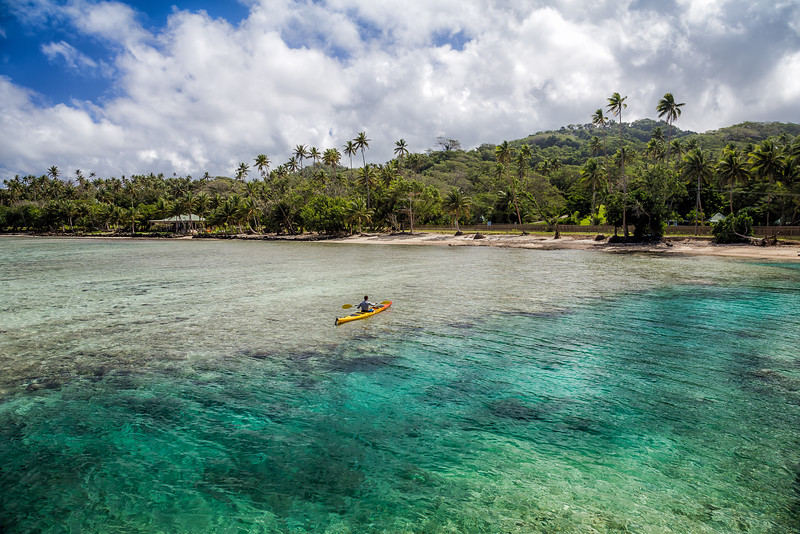
March in Fiji
Just like February, you can expect there to be a lot of rain in March and it’s not the best time to visit Fiji if you’re looking to stay dry.
This is the rainiest month of the year and it’s also the middle of cyclone season, meaning that if Fiji does get hit by tropical storms it’s likely to happen in March.
But for budget travelers , the deals on flights and hotels can be a steal compared to the high season.
If you want to experience luxury on a budget, then consider March, and book out a swanky beachside resort or overwater bungalow.
You’ll also find the jungles and forests at their most pristine, as the heavy rainfall ensures that flowers are blooming and the trees and foliage are verdant and beautifully green.
The waterfalls, of course, are easily at their most powerful extent in March too.
The Yasawas Islands are also a good pick for March because they receive less rainfall than places like Suva or Nadi.
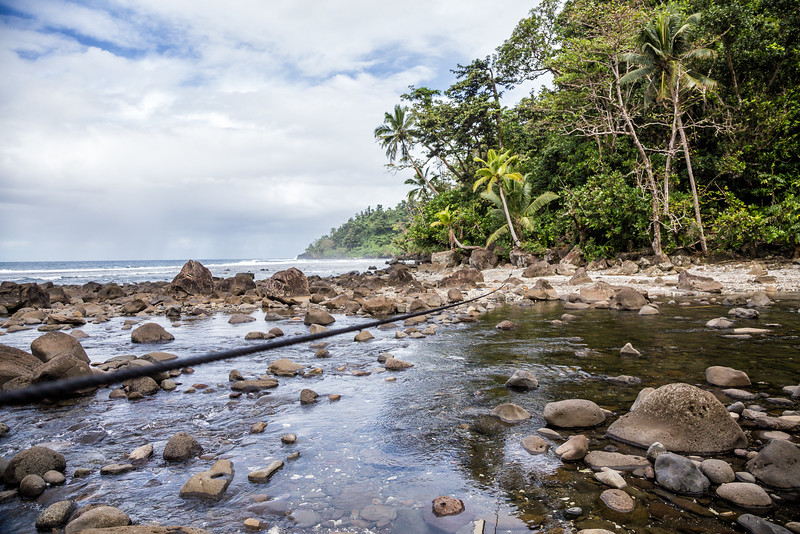
April in Fiji
April is the last month of the wet season, and it’s a lovely time to be in Fiji if you’re looking to avoid the summer crowds that will soon arrive and enjoy fairly glorious weather too.
Temperatures are still very hot, and you’ll find it often rises above 30 degrees Celsius in the daytime and still stays high in the night.
The humidity is dropping though as Fiji transitions into winter.
You’ll still have rain showers in April but these drop off towards the end of the month.
The Yasawas and Mamanucas Islands will have much less rainfall so head here for a lovely tropical getaway.
A beachside resort is a good choice for April as you’ll be able to jump into the ocean to cool off.

May in Fiji
May is the start of the dry season and it can easily be the best time to visit Fiji.
You’ll avoid the real high season crowds that arrive in June and July and you’ll still have wonderfully gorgeous weather.
There might be the odd rain shower in May but it’s mostly dry across the islands.
The sun is shining and the temperatures are still hovering around 30 degrees Celsius, which is why this is a great time to explore Fiji.
Go scuba diving or snorkeling, as the water is still warm and the visibility is already much better than during the rainy season.
Fiji has some of the best coral in the world and one of the largest reefs in the world too.
Head to Vanua Levi for the pick of the snorkeling, or visit Denarau Island to explore the beautiful offshore paradise before the crowds arrive next month.
June in Fiji
June is the start of the high season because weather-wise this is the best time to visit Fiji.
The rain is now over and the skies are clear, while the temperatures are starting to drop too.
This is a great time for snorkeling and diving, so head to the tropical idylls of Yasawas or Mamanucas for some world-class underwater views and marine life.
June gets busy in Fiji because in Australia and New Zealand its winter and winter sun-seekers flock to the islands.
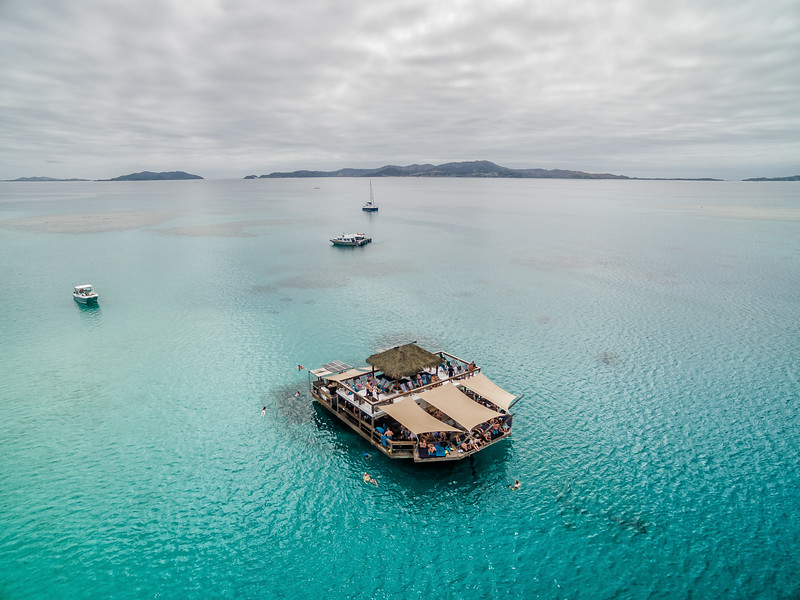
July in Fiji
It’s winter in Fiji in July but that means that it’s a prime time to be exploring.
Everyone else will have the same idea though because this is peak season.
Not only is Fiji packed with winter sun-seekers but it’s the school holidays in Australia and New Zealand too, and for many, it’s the only chance they get to take a vacation.
If you are looking for peace and quiet then July isn’t the best time to visit Fiji.
It’s not a good time if you’re on a budget either because of the prices across the country skyrocket.
You’ll be paying a premium for resorts and paying a lot more for flights too.
It’s a beautiful time weather-wise but if you do go in July be sure to book everything in advance.

August in Fiji
August can be just as busy as July, especially during school holidays, and August is best avoided if you are looking for a quiet getaway.
Prices remain high in August, but everywhere in Fiji looks beautiful this time of the year.
You can’t really pick a bad destination in August so try and get off the beaten track if you absolutely have to travel now.

September in Fiji
September is much quieter than August so try and hold off and visit now instead.
This is getting towards the end of the dry season but the weather is still perfect. It’s getting hotter and it’s very dry.
This is the best time to visit Fiji if you want to snorkel or dive because the water is incredibly clear.
It’s also manta ray season and you can swim with these beautiful creatures off the coast in the warm waters of the Pacific Ocean.

October in Fiji
October is the last month of the dry season, so make the most of the dry weather and clear skies before the wet season soon begins.
This is very much a shoulder month and it’s a great time to be in Fiji if you’re looking for a quiet escape.
Visit the Coral Coast or other popular destinations for excellent underwater activities in the clear waters that surround Fiji.
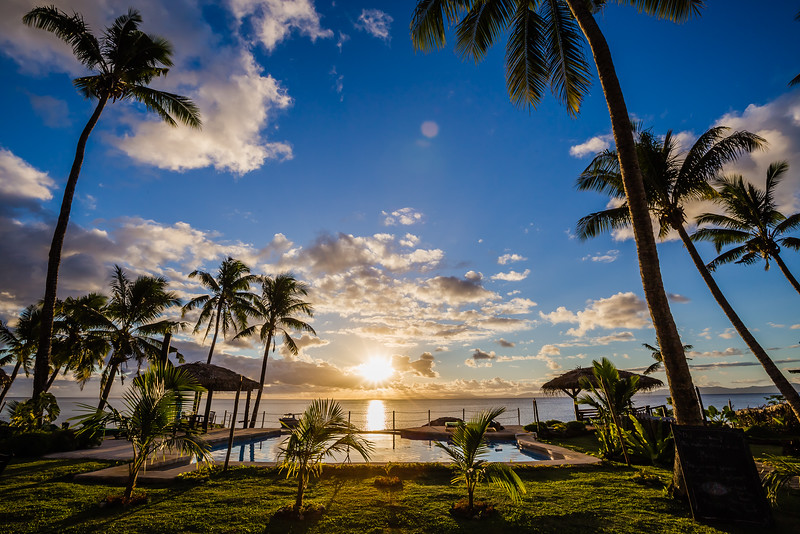
November in Fiji
November is the start of the rainy season again in Fiji, although it’s more of a transitional month.
This can actually be the best time to visit Fiji if you want to avoid the summer crowds.
You can still enjoy some great weather because there’s only a spattering of storms and rain clouds throughout the month.
Prices are cheap after summer and before Christmas so take advantage of the low costs and book into some luxury bargain resorts.
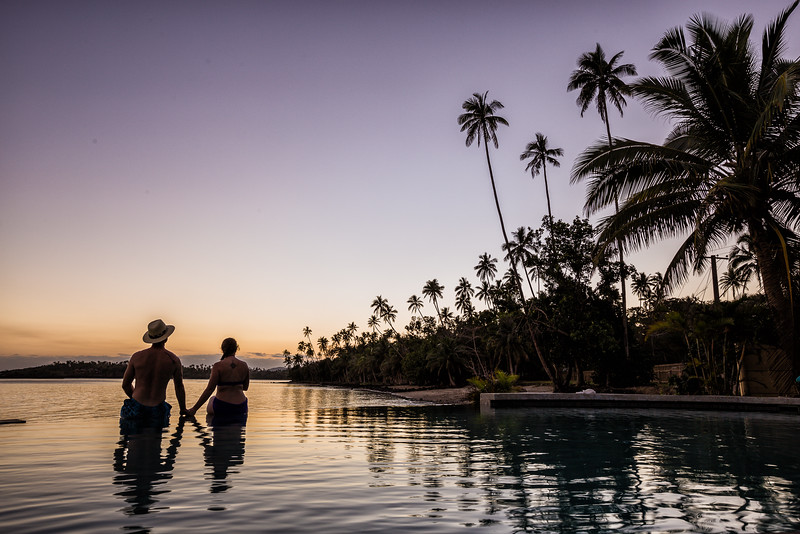
December in Fiji
Although December is well into the wet season now, and temperatures are high and the humidity is at times unbearable, Fiji experiences a mini high season, especially over Christmas.
Holiday-makers flock here looking for a hot and sunny Christmas or a tropical getaway over the holiday period and prices skyrocket.
There are lots of rain showers, but actually, the wet weather isn’t too bad in December, which is why Fiji is still so popular a choice.
The warm waters are welcoming for snorkelers and divers and you can book a beachfront resort to enjoy the cool ocean breezes.
Our Top Recommended Tours:
- Wanderlands Fiji Tour – 8 days
- Fiji Expedition Tour – 9 days
- Fiji Viti Levu Island Experience – 6 days
- Community Development Expedition in Fiji – 14 days
More on Fiji:
- 16 Bucket List Things to do in Fiji
- 9 Adventures You Cannot Miss in Pacific Harbour, Fiji
- Fiji Honeymoon: Ultimate Romance and Adventure Guide
- Cloud 9 Fiji: Is It Worth Visiting?
- 11 Epic Day Trips from Denarau, Fiji
- 10 Epic Things to Do in Taveuni, Fiji (Plus Planning Tips)
- 7 Reasons to Stay at the Koro Sun Resort and Rainforest Spa in Fiji
- 16 Exotic Islands That Are Worth Adding to Your Bucket List
Did you like this story? Share it!
Travel planning resources, about lina stock.
Lina is an award-winning photographer and writer that has been exploring the world since 2001. She has traveled to 100 countries on all 7 continents. Member: SATW, NATJA, ATTA, ITWA
Leave a Comment Cancel reply

Climate in Fiji
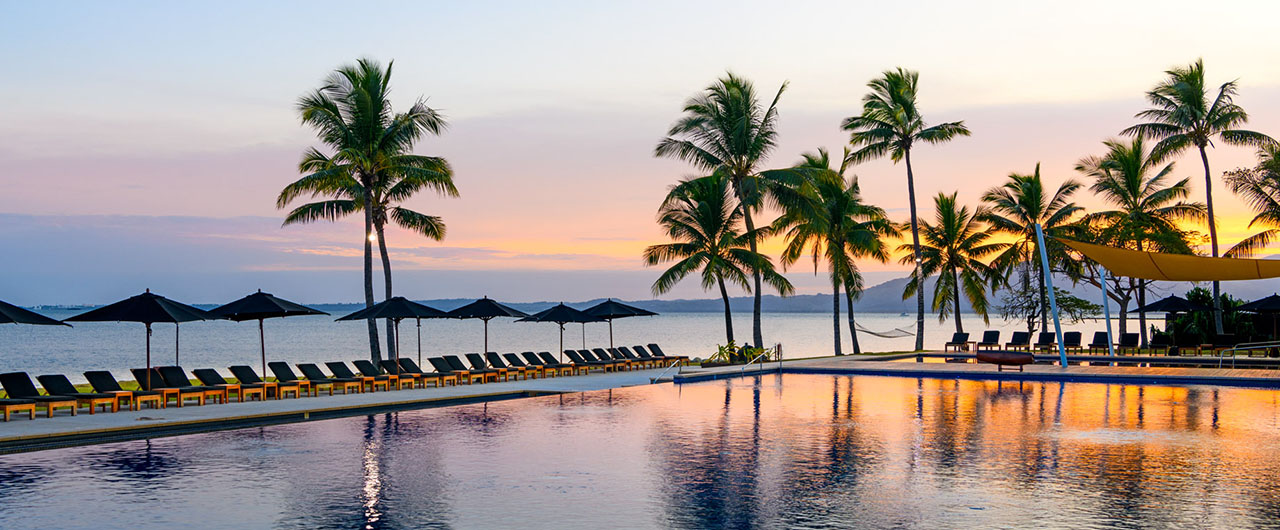
Embracing Fiji's Eternal Summer: A Guide to Its Climate and Seasons
What is fiji's climate like .
Located south of the equator, Fiji boasts a warm, comfortable sub-tropical climate. The average daily temperature consistently sits between about 26° and 31°C, evenings in the cooler months can get slightly chillier, but even in the peak summer months it doesn't get unbearably hot. Rainfall and humidity vary across bigger islands like Viti Levu and Vanua Levu due to tall mountain ranges and dominant southeast trade winds. The big islands are generally wetter in the eastern regions, which makes for brilliant diversity in landscape and lush tropical rainforest offering some world-class hiking and bird-watching opportunities. The drier, western regions of the larger islands typically feature dry forest and grassland perfect for hiking and big views. Smaller islands typically have a more consistent climate across their land area.
What are the Seasons in Fiji?
There are only two seasons in Fiji, summer and winter.
Summer (November - April)
'Summer' in Fiji is known as the wet season, and includes the months from November to April. These months are characterised by long, warm days, short afternoon downpours that seem to come out of (and then disappear into) nowhere, fiery sunsets and higher humidity, so a water bottle to keep hydrated throughout the day is a must. Daily temperatures can soar to 31°C, with the average temp sitting at 25-26°C. January/February are the warmest months. Check out the weather, climate, temperature and more for the summer months in Fiji:
- Fiji weather in November
- Fiji weather in December
- Fiji weather in January
- Fiji weather in February
- Fiji weather in March
- Fiji weather in April
Winter (May - October)
'Winter’ the dry season, offers shorter but sunnier days, with coastal areas getting a bit cool evening so take a light jacket to keep warm while sipping cocktails at the beach bar. The temperature is only slightly lower than the wet season, with an average temperature of 23-24°C and most days ranging from 19-28°C. July and August are the coolest months, and the average rainfall drops between 50-75% compared to the wetter months. Water temperatures don’t fluctuate much staying a comfortable range throughout the year.
Check out the weather, climate, temperature and more for the winter months in Fiji:
- Fiji weather in May
- Fiji weather in June
- Fiji weather in July
- Fiji weather in August
- Fiji weather in September
- Fiji weather in October
Consistent Water Temperatures
One of the most appealing aspects of Fiji's climate is the consistency of its water temperatures. Whether you're snorkeling, diving, or simply swimming, you'll find the water to be comfortably warm year-round, making it an ideal destination for water enthusiasts.
Planning Your Fiji Holiday
Before you head to Fiji, check the weather so you know what to pack. Just be aware that weather apps sometimes struggle to accurately predict tropical weather. For instance, some apps might show thunderstorms all week, but in reality, you'll enjoy sunny days with a few occasional showers. For a more reliable forecast, we recommend using the " Windy " app (download for Android and iOS ). It provides a detailed, 3-hour window of the weather each day, helping you better plan your activities and pack accordingly.
Key Takeaway
Overall, Fiji's climate offers a perfect blend of warmth and diversity, ensuring a memorable experience for all visitors, no matter the season.
Want help to plan your perfect holiday?
Fiji weather guide.
- Things to do in Fiji
- Book Nadi Airport Transfers
The Ideal Time to Visit Fiji: A Month-by-Month Guide for First-Time Travelers
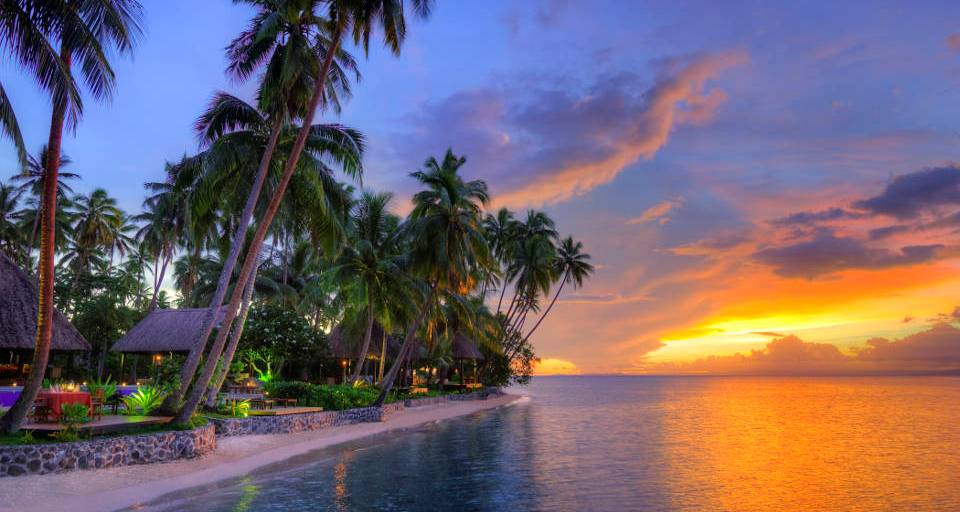
Fiji is a breathtaking tropical paradise that attracts visitors from around the world. With its white sandy beaches, crystal clear waters, and vibrant culture, Fiji makes for a perfect vacation destination. If you're planning your first trip to this island nation, you might be wondering when is the best time to visit. In this blog post, we'll guide you through the ideal months to travel to Fiji and what to expect during your stay.
- Dry Season (May to October) The dry season in Fiji is the most popular time to visit, thanks to its pleasant weather and lower humidity. Here's what you can expect during these months:
May, June, and October: These months are considered the shoulder season, with fewer tourists and slightly cooler temperatures ranging from 24-29°C (75-84°F). This is an excellent time to visit if you prefer a more peaceful vacation experience.
July to September: These months are the peak tourist season in Fiji, with the driest and most stable weather. Be prepared for more crowds, but also a lively atmosphere with various events and festivals taking place.
- Wet Season (November to April) The wet season in Fiji is characterized by higher temperatures, humidity, and rainfall. While it may not be the ideal time for some travelers, there are still benefits to visiting during this period:
Lower prices: You can take advantage of off-peak pricing for accommodations and activities.
Fewer tourists: Enjoy a more relaxed and less crowded atmosphere during your stay.
Lush greenery: The increased rainfall makes the vegetation even more vibrant and lush.
However, keep in mind that the wet season also coincides with the cyclone season, which usually peaks between December and February. While severe weather events are relatively rare, it's essential to stay informed and prepare for the possibility of storms.
Fiji is a fantastic destination year-round, but the best time to visit ultimately depends on your preferences and priorities. Whether you choose to travel during the dry season or embrace the wet season's unique charms, you're sure to have a memorable experience in this island paradise.
For more information on planning your Fiji vacation, including activities and accommodations, be sure to explore our other blog posts on Fijidude.com. Don't forget to book your activities and experiences through our website to make the most of your Fiji vacation. Happy travels!
Your Travel Journey Starts Here
Other services.
Copyright © 2023 by Fijidude.com - Powered by Bulawebs.com
FijiDude : Your Fiji Connection
Welcome back
Don't have an account yet? Sign up for free
Sign in or create an account
Already have an account? Log in
- Let's fly
- Explore hotels
- Travel insurance
- Pride Flight
- Featured sales
- Sign up to V-mail
- Retrieve your Travel Bank details
- Change or cancel
- Upgrade options
- Redeem travel credits
- Disruption information
- Rapid rebook
- Flights to Sydney
- Flights to Melbourne
- Flights to Brisbane
- Flights to Perth
- Flights to Gold Coast
- Flights to Cairns
- Explore all destinations
- Flights to Bali
- Flights to Fiji
- Flights to Queenstown
- Flights to Tokyo
- Melbourne to Sydney
- Sydney to Melbourne
- Sydney to Brisbane
- Melbourne to Brisbane
- Adelaide to Melbourne
- Brisbane to Sydney
- Perth to Melbourne
- Sydney to Bali flights
- Melbourne to Bali flights
- Brisbane to Bali flights
- Sydney to Fiji flights
- Melbourne to Fiji flights
- Brisbane to Fiji flights
- Travel inspiration
- Destinations
- Travel agents
- Cargo services
- Airline partners
- Specific needs and assistance
- Flying with kids
- Group travel
- Travelling with airline partners
- Carry-on baggage
- Checked baggage
- Dangerous goods
- Baggage tracking
- Connecting flights
- Airport guides
- Transfer maps
- Cabin classes
- Onboard menu
- In-flight entertainment
- Get connected
- Health onboard
- Travel and entry requirements
- About the program
- Join Virgin Australia Business Flyer
- Partner offers
- Why choose Virgin Australia
- Other solutions
- Enquire now
- Transfer credit card points
- Points earning credit cards
- Earning points
- Redeeming Points
- Buying Points
- Velocity home
- Transferring Points
- Member benefits
- Shop using Points
- Shop to earn Points
- Velocity Wine Store by Laithewaite's
- How to use Points for flights
- Status membership
- Flight status
- Destinations /
The best time to visit Fiji - seasonal recommendations
What's the weather like in fiji.
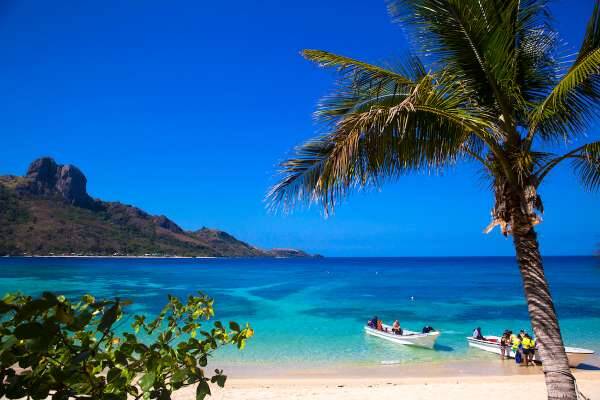
Credit: Tourism Fiji
Beautiful? Magical? Stunning? All of the above... but let’s get more technical for a moment. Fiji experiences what’s known as a tropical maritime climate, without any great extremes when it comes to hot or cold. The mild trade winds will keep you cool and most of the year the temperature will sit at around 30 degrees Celcius, maximum. Temperatures don’t vary much through the year as they do in southern parts of Australia. In fact, the temperature in Fiji varies by only two to four degrees throughout the year, making it one of the most popular tropical holiday destinations for Australians . Fiji’s water temperature doesn’t change much either – you’ll never need more than shorts or swimmers, with the sea temperature averaging between 25 and 28 degrees. Only divers going deep into Fiji’s ocean need to consider a wetsuit. Just like deciding when to visit Bali, there's a definitive dry and wet season in Fiji to plan around – let’s examine that in more detail.
When is the dry season?

The greatest chance you’ll have of experiencing no rain at all on holiday in Fiji is July and August. Winter is the dry season in Fiji – in July and August, you can expect to receive about four days of rain in a month (that’s not to say you’ll receive a full day of rain, but you’ll experience some kind of precipitation). Not bad, right? No wonder it’s the peak season for tourists coming to the islands, especially since it’s the coldest time of the year back home in Australia (going from 12 degrees maximum in Melbourne to 29 in Fiji sounds pretty good to us). Expect to experience temperatures in the high twenties - so you won’t be needing too many winter woollies. The nights get a little cooler which helps for sleeping (without air conditioning) – so bring a light jumper or long sleeved top, and the skies are especially clear at this time of the year, especially for stargazing. It gets busy during this winter dry season – with the peak set around the Australian and New Zealand July school holidays. The only busier time you’ll find all year in Fiji is Christmas.
When is the wet season?

Credit: Aaron March
That’s summer – Fiji’s official wet season and the wettest month is March, where you can expect 16 days with some sort of rainfall. The good news, though, is that the wet season is still full of plenty of sunshine, and even when it’s raining, it’s warm. Think of the wet season like this: sunny, hot mornings that build towards a storm in the afternoon, with a clear evening after. Of course, that’s not every day, but it’s often the way.
So don’t discount the wet season as it’s often a great time to travel because it’s less busy (except for the Christmas/ New Year school holidays, of course) and it’s not very windy (let’s talk about that a little later, ok?). It’s also a great time to see Fiji’s many waterfalls (there are lots of them all over Fiji, especially on the main island, Viti Levu, and Fiji’s third largest island, Taveuni, which is full of national parks and waterfalls). If you’re looking to holiday in Fiji without any crowds, you might consider the wet season, especially straight after families leave to return to school around late January. The cheapest time to visit for airfares and hotel room prices is January and February – just after the school holidays. Also consider that some activities in Fiji are great during the rainy season, especially white-water rafting the Upper Navua River in the highlands of Viti Levu – during the rainy season, you’ll see as many 100 waterfalls on your full day journey down the river. The wet season finishes around April – which is a really great month to visit too.
Is there a cyclone season in Fiji?

Yes, there is. Like the rest of the South Pacific, there’s a chance of tropical cyclones forming. This is the same for anywhere in subtropical and tropical regions around the world. Officially, the cyclone season in Fiji begins in October and ends in April, though you have the greatest chance of experiencing one between December and March. Cyclones vary in their intensity and most that come through Fiji are only of the intensity of a big storm, but Grade Five (the highest category) do come through Fiji during summer.
Is there a best time to visit Fiji?

Perhaps the best time to visit Fiji is May. Why? Most – nearly all - of the rain has stopped, the skies are clear and it’s not as hot as summer - meaning it's the perfect weather to tick off your bucketlist of Fiji's best things to do . Airfares are a little cheaper, as is accommodation as it’s not as popular in May as the dry season – from June to September, and it’s before the school holidays in Australia and New Zealand. There are, on average, just six days of some sort of precipitation, and temperatures average between a low of 20 degrees and a high of 29 degrees. Bliss! May is magic. But so is April. There’s a little more chance of rain, but the wet season is behind you and while it can still be quite hot and humid, it cools down at night.
Also consider spring – September to November. It’s also a little quieter and there’s very little rain (around five days in September) and exotic flowers and plants are in full bloom. Spring is a great time to visit the rainforests of Fiji – especially on the main island, Viti Levu, and Fiji’s Garden Isle, Taveuni, where over a third of the island is protected in national parks. The flowers are incredibly colourful – if you’re looking to get right into nature, consider a spring holiday.
I'm a surfer. When should I visit Fiji?

Credit: Qamea Resort
Good news, surf fans, you can visit all year round. Unlike countries in the Pacific like Hawaii, there’s no surf season (Hawaii can be very flat for surfers all summer). March to November is generally the best time to surf because the south-east trade winds blow more at this time, creating off-shore conditions at most of Fiji’s best surf breaks. It’s also when low pressure systems build in the Tasman Sea and bring consistent swell to Fiji, especially at Fiji’s surfing hotspot – along the southern reefs of the Mamanuca Islands, at world famous breaks like Cloudbreak and Restaurants (where you can stay next door at islands resorts such as Tavarua Island Resort and Namoti Island Resort).
But there’s also great surf between November and February, especially if you’re a less experienced surfer and prefer smaller, calmer waves. In general, the biggest waves will hit Fiji’s surf breaks between May and August, which attracts the highest number of top level surfers. Surfing between March and April is best if you prefer less crowded waves but still with very consistent breaks. And don’t worry about a wetsuit, just pack lots of sunscreen!
I'm a diver/ snorkeller. When should I visit Fiji?

Credit: Kokomo Private Island
As we’ve mentioned, water temperatures don’t vary much during the year – but the best water visibility you’ll get in Fiji is during the winter months, from June to September, when there’s less rainfall to dirty the waters, and the water’s just a little cooler. Expect visibility up to 50 metres. Fiji offers some of the best diving anywhere in the South Pacific.
Is there a windy season in Fiji?

There is – but relax, it’s not going to ruin your holiday. The south-east trade winds blow year-round to some degree, and they’re what affects the temperature and climate. But they’re strongest generally in the winter months – between June and October. This, of course, is the dry peak season, so there’s a trade-off, there will be less rain, but you have more chance of higher winds, especially in the afternoons. That’s why it’s worth considering a holiday to Fiji outside of the peak season – don’t forget that May is a great month for rainfall and wind. Although those who wish to try kite-boarding might consider this time to visit – especially on the north coast of Viti Levu, which is one of the Pacific’s best kite-boarding destinations.
Is the weather the same everywhere in Fiji?
In a word: no. Sure, all 333 islands of Fiji experience the same tropical maritime climate, but there are a lot of microclimates all over the islands, which might affect how nice the weather is where you’re staying.
Rainfall is heavily influenced by the topography of the islands. And Fiji’s main island (which is the most populated and is where most resorts are) is very mountainous (as are its second and third largest mountains – Vanua Levu and Taveuni). So where you stay can make a big difference on these islands.
The south-east trade winds create wet climate zones and rain-shadows. There are mountains as tall as 1324 metres on Viti Levu, so you’ll get a lot of variation. The windward side of Viti Levu receives over double the amount of rainfall as the other side – the leeward side. So it’s going to be a lot rainier around Fiji’s capital, Suva, than on its protected western coast.
So, where should I stay?

Credit: Matt C Bauer
The good news for visitors is that the popular resorts of Denarau Island experience less rainfall, as do the very popular resorts of the Mamanuca Islands, home to 20 islands and 18 resorts. They receive the least rainfall of any of the Fijian islands. This is also the case with the Yasawa Islands, which lie a little further north-west. There are also 20 islands that make up the group and they’re some of the most beautiful in the South Pacific, with every kind of resort to stay at – from budget resorts to some of Fiji’s most iconic five-star private island resorts. They receive an average rainfall of only 180 centimetres and in the dry months of winter, they receive below 10 centimetres per month (June receives less than five centimetres). The mountains on Fiji’s main island stop a lot of the trade winds that blow more prominently in those areas of Viti Levu that aren’t as protected.
This includes the resorts of The Coral Coast – another very popular area for tourists to stay in Fiji (about an hour’s drive south of Nadi International Airport)– they receive more rainfall and are less protected from the trade winds. But it’s not enough to ruin a holiday – the differences aren’t enormous, and you’ll still get lots of sunny, still days on the Coral Coast (it’s one of Fiji’s most iconic tourism regions for a reason).
If you’re staying on Vanua Levu – Fiji’s second largest island – you’ll also be affected by its very tall mountains. Resorts on the leeward side will be a safer bet for a drier, more protected holiday. Taveuni – Fiji’s third largest island – is mountainous too and is home to Fiji’s tallest mountain. If you’re staying near these mountains in the interior, expect more rain, but areas around its north-western coast are drier.
- Big Island of Hawaii
- Cook Islands
- French Polynesia
- New Zealand
- Tahiti, Moorea, Bora Bora
- My Favorites
- My Specials
- Best honeymoon destinations
- Best time of year to visit Tahiti
- Best time of year to visit Fiji
- Best time of year to visit the Cook Islands
- Best time of year to visit St. Lucia
- Best time of year to visit Vietnam
- Best time of year to visit Thailand
- Best time of year to visit Bali
- Best time of year to visit New Zealand
- Best time of year to visit Australia
- Best time of year to visit the Seychelles
- Best time of year to visit the Maldives
- Best Jamaica all-inclusive resorts
- Best Fiji all-inclusive resorts
- Overwater bungalows
- Detailed visa requirements by country
- Tahiti, Bora Bora, and Moorea Destination Weddings
- Fiji Destination Weddings
- Best resorts in Tahiti, Bora Bora, and Moorea
- Best resorts in the Dominican Republic
- Best resorts in Fiji
- Best resorts in Jamaica
- Best resorts in Kenya
- Best resorts in New Zealand
- Best resorts in the Seychelles
- Hawaii - Maui
- Hawaii - Kauai
- Hawaii - Big Island
- Hawaii - Oahu
- Dominican Republic
- Puerto Rico
- St. Kitts and Nevis
- St. Maarten
- Turks and Caicos
- Virgin Islands - US
- Virgin Islands - British
- Bali & Indonesia
- Ask an Expert
Testimonials from Joni's clients:
Best time of year to visit fiji.
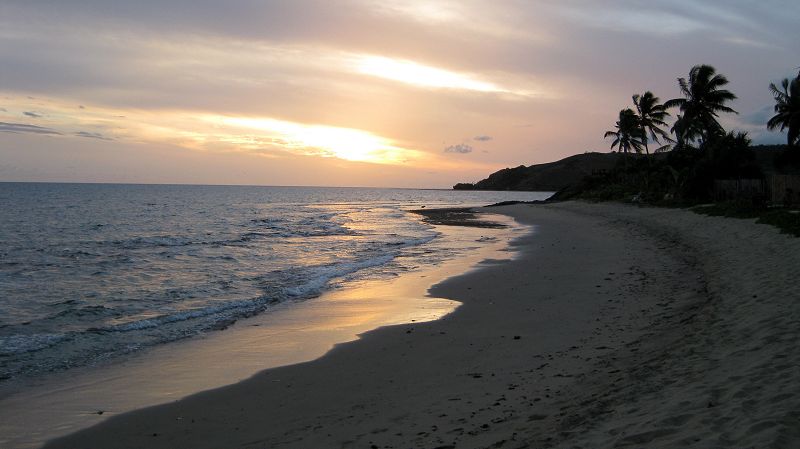
- Compare islands
- Airfare by month
- Travel specials
- See all resorts in Fiji
- Temperature by month
- Precipitation by month
- What's a "bure"?
Storms in Fiji
- Scuba diving & snorkeling
- Map of all resorts & islands
Fiji is a tropical paradise...with weather to match! This luscious country is blessed with natural beauty both on the land and under the water.
Fiji wholesalers--and many of the resorts themselves--are very active when it comes to special offers, discounts, extra inclusions, etc., and so these kinds of deals are changing all the time. Most websites aren't able to keep those specials up to date--there's just too many of them, and they're changing and expiring all the time. At Visual Itineraries, we track the offers from the major wholesalers daily , and our specialists have tools that show them all the available offers and discounts for a particular property instantly.

See our complete list of travel specials for the islands of Fiji.
See & compare all resorts in the Fiji islands
If you're trying to decide where to stay in the Mamanucas , Viti Levu , Vanua Levu , the Yasawas , or any of the other islands , we can help! For the 80 resorts there, we've got over 1,000 high-resolution photos, 62 videos, and even some virtual tours to help you find your perfect Fijian bure. Click here to use our Visual Explorer to check out all of them.
You're going to fly into Nadi (pronounced "Nandi"), which is one of the two main cities in Fiji (the other being Suva). Both of these cities are on the main island of Viti Levu. The tourist areas on this island where the hotels are are the Coral Coast, and Denarau Island. Here, you'll mostly find traditional multi-room hotels, which are less expensive in general than the island resorts, and tend not to have separate bures.
The Mamanucas (pronounced "Mamanoothas") are the chain of islands that starts just off the west coast at Nadi, and curves around to the northwest. This is where you'll find many islands resorts with beach bures (including Liku Liku , which has overwater bures). Some of these islands have just one resort on the entire island; some have 2 or 3. These islands are easy (and inexpensive) to get to via a quick boat shuttle from Nadi, and tend to be moderately priced. Great snorkeling and scuba diving is very close by on the Malolo Barrier Reef.
Just north of the Mamanucas is the Yasawa island chain. These islands have just a few resorts, very high-end, with lots of privacy, stunning beaches, and very small numbers of guests per resort. One of my favorites there is Yasawa Island Resort .
Fiji's second largest island is Vanua Levu, which sits to the northeast of Viti Levu. It's far enough away that you'll need to take an island hopper flight out to your resort. It's very popular with scuba divers, and in fact Jacques Cousteau's son Jean-Michel Cousteau has a fantastic resort there, called Jean-Michel Cousteau Fiji Islands Resort . The Somosomo Strait , which separates Vanua Levu and the smaller island Taveuni, has many world-class dive sites. Namale and Koro Sun are two of the other more notable resorts on Vanua Levu.
Taveuni is popular with divers for the same reason Vanua Levu is--proximity to the fantastic soft coral gardens and walls in the Somosomo Strait. Here, be sure to check out Laucala , Matangi , and Qamea .
Beqa (pronounced "Benga") Lagoon is well known for shark diving--but, you don't have to be a diver to enjoy this area, as the islands nearby (including Beqa Island itself) are home to some fantastic 5-star resorts, such as Lalati and Royal Davui .

Typical airfares from LAX to Nadi, Fiji
Airfares vary by season, but also day of week, and are definitely affected by holidays. The chart above shows the typical minimum and maximum fares for a economy class ticket from Los Angeles (LAX) to Nadi International Airport, by month. We gathered this data in June 2016 from FareCompare.com .

Best time of year to go to Fiji
If you're coming from North America, you should try to set out between late April to early June, or late July through August, due to decreased fares on Air Pacific and Air New Zealand. June to October are the coldest and driest months in Fiji. Cyclone season runs from November to April. Hotels and resorts offer low prices in February and March as most are vacant.
Average temperatures in Fiji
From May through November, Fiji's winter, temperatures are warm during the day--around 80 degrees Fahrenheit--and cooler at night and in the early mornings. During the summer rainy season from November through April, temperatures can reach 95 degrees Fahrenheit with late afternoon showers. Fiji offers a tropical climate with higher humidity and rain during the summer and lower temperatures with dry air in the winter. However, the winds cause climate variances from island to island. Speak with your travel specialist about weather around your resorts.
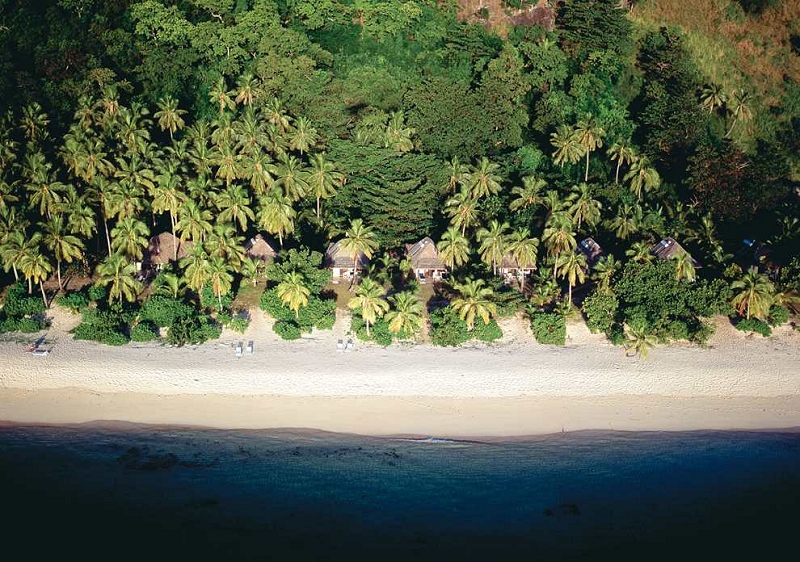
What's a Bure?
A bure is technically the Fijian word for a wood and straw hut. In traditional Fijian culture, there was a vale , which was the "family house", and then separate bures for the men to meet, eat and sleep. Today, you'll find any kind of detached bungalow referred to as a bure. With the exception of the main island of Viti Levu, you'll find that nearly all resort accommodations in Fiji are bures (the main island has a number of more traditional multi-room hotels). Bures come in a number of "flavors": beachfront, garden, and even overwater bures (at Likuliku ). And Matangi has a romantic Treehouse Bure, as does Koro Sun Resort .
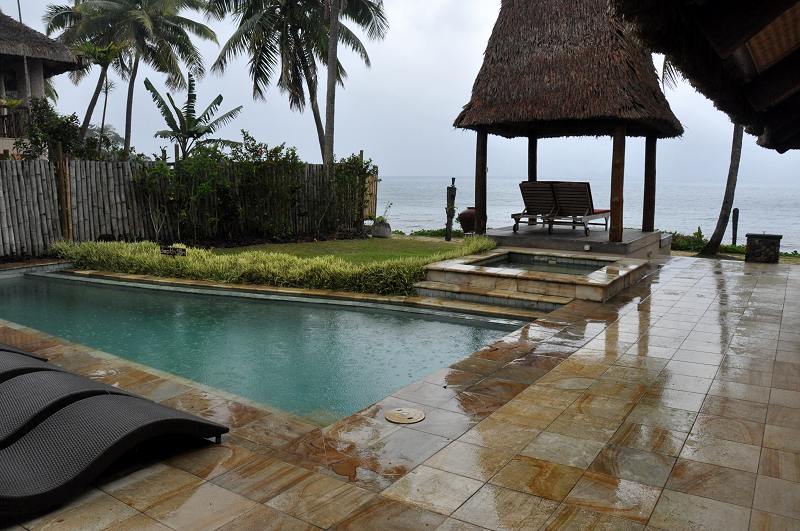
During the winter rainy season, afternoon showers occur with frequency. In the case of a tropical storm or cyclone, residents and travelers are relocated to safe areas. Tropical storms during the rainy season are not uncommon: the last major cyclones to hit Fiji occurred in December of 2012, March of 2010, December of 2009, December of 2007 and December of 2003.
If it rains while you're there--then it's a perfect time to sit down with the locals and try kava , a traditional drink made from the kava root. It's got a mild calming effect, and there's a little ceremony that goes with each sip you take--the locals will be sure to teach you. It tastes a bit like dirty water, with a bit of a sparkling edge to it...but it's an experience you really should try while you're there.
A little inclement weather might encourage you to forgo a snorkel trip and experience a Lovo : it's a traditional Fijian feast, a bit like the Hawaiian luau, complete with a pig roasted in an underground oven, wrapped in banana leaves. Often this will be combined with the Meke, which is a traditional story-telling dance performance, with an orchestra performing on percussion instruments.
Water temperature, SCUBA diving in Fiji
Fiji has warm water temperatures year-round although thin wetsuits are recommended for deeper dives. In the northern islands of Vanua Levu and Taveuni, the rainy season (November through April) has a much greater effect and if you really want to dive that area, you'd be advised to stick to the dry season. In the Mamanucas, Beqa, and on Viti Levu it's not nearly as much of a concern, and diving and weather in general is pretty nice all year round.
- the Black Forest--ancient black coral trees, diverse assortment of fish and marine life, near Wananavu Beach Resort
- near Taveuni you'll find The Ledge, The Great White Wall, Jerry's Jelly, and Annie's Bommie; nearby resorts include Qamea , Laucala , Matangi , Taveuni Palms , Paradise Taveuni , Maravu , and Taveuni Island Resort
- the Great Astrolabe Reef is near Kadavu Island, and this is considered to be the largest living organism in Fiji, with tons of varieties of hard and soft corals and diverse marine life; it's about 40 miles from the major resorts at Beqa Lagoon
- Naiqoro Passage has both a wide variety of coral plus schools of sharks and barracuda
- Beqa Lagoon, near Beqa Lagoon Resort , Lalati , Royal Davui , and Shangri La , is known for shark encounters as well as brightly colored coral, and is considered one of the best lagoons for diving in the South Pacific
- in the Mamanucas , you'll find gorgeous corals, some sharks, and plenty of colorful fish and marine life, especially around the Malolo Barrier Reef; popular sites include Supermarket, Salamander shipwreck, Plantation Pinnacles, and Magic Island; there are many resorts in the Mamanucas to choose from

- We'll talk with you to find out what you're looking for, what you like/don't like, etc.
- We'll use our first-hand knowledge of the destination to pick out a handful of resorts we think you'd like
- We'll create a custom mini website for you, with photos, videos, maps, etc. of the resorts we are recommending
- We'll follow up with you to help you make your decision
- We'll go to work with our suppliers to get you the best deal available on what you've decided on.
Map of all Resorts in Fiji

COMMENTS
June to September is the high season in Fiji - and the best time for enjoying some idyllic weather. Fiji has two seasons: summer (the wet season) and winter (the dry season). The latter (generally June to September) is the peak tourist season in Fiji with temperatures hovering between 20-30ºC (68-86ºF). Expect an uptick in accommodation ...
The months between July and September constitute high season in Fiji. The sun shines bright, warming the islands to daily temps that range from the mid-60s to the mid-80s. ... But if you travel ...
Fiji Weather in the Wet Season (Summer) Months: November, December, January, February, March and April Tourist Season: Low season (except Christmas & New Year) Temperature: 22-33 ° C (72-91 ° F) Rainfall/month: 180-310 mm (2.8-6 in). About the Wet Season in Fiji. The "Wet Season" or the "Rainy Season" can't help but conjure up damp and dreary images ruining your holiday in paradise ...
The reason for this is because the most popular visiting time in Fiji is the peak season. Besides being the most expensive time to visit Fiji, it is equally the busiest. July and August in Fiji fall within Australian and New Zealand school winter holidays and this is the peak travel season in Fiji because a lot of families go on vacation within ...
Off-Peak Season in Fiji. Off-Peak Season - is between the months of early December and mid-January to March. This is when the quietest and cheapest time to visit Fiji. Festive seasons - during mid-December to mid-January, there is normally a small spike in tourists as the Festive Season intertwines with the Southern Hemisphere summer break.
Winter in Fiji. Winter in Fiji is also known as the dry season and lasts from May to October. During the winter months, you can expect lower humidity levels and temperatures that range between 16 °C and 28 °C.Plus, the water in Fiji is often clearer during the dry season - without the runoff from the rain, keen divers and snorkellers can enjoy increased visibility in the vibrant coral reefs.
Dry season in Fiji. On the other hand, the dry season, also known as winter, lasts from May to October. This is the perfect time to visit Fiji for a beautiful vacation. The temperatures during this time range between 16-28°C, and there's no rainfall. It's an ideal time for activities like hiking and surfing, and divers and snorkelers will ...
Peak tourist season: June to September. In Fiji, the dry season, which lasts from June to September, is the busiest travel period. If you prefer to spend your days relaxing on the beach and taking part in water sports like snorkeling and scuba diving, this is the best time to go.
Fiji's busiest travel season during the dry winter can be unfavorable for travelers looking to avoid big crowds at the resorts or on the beaches. Visiting Fiji In The Spring. Spring in the southern hemisphere occurs during the months of October to December. These months fall within Fiji's wet season.
The best time to visit Fiji largely depends on your travel preferences and desired weather conditions. Fiji's dry season from May to October offers pleasant temperatures, lower humidity, and less rainfall, making it the peak season for optimal weather. During this time, travelers can enjoy a wide range of outdoor activities and water sports and ...
Fiji is a year-round destination with warm temperatures and plenty of sunshine throughout the year. The most popular time to visit is between May and October when the weather is at its best - think blue skies, low humidity and little rain. The monsoon season (November to April) coincides with the off-season, but for travellers who don't mind ...
Overall Fiji Travel Experience by Season Fall (March through May) Humidity and temperatures combine to make this season feel warm. Highs range from 87.4°F (30.8°C) and 82.6°F (28.1°C) with colder temperatures in the later months. Rain is somewhat common with 6 to 10 days of significant precipitation per month. Fall is the second busiest for ...
The wet season runs from November to April, and this is when Fiji is hot and humid. You can expect rainfall but it's often short, although fierce, and it's a good time to visit for lower prices and quieter tourist spots. The best time to visit Fiji is in the dry season, which coincides with winter. This is from May to October, and you can ...
The best time to visit Fiji is during the shoulder seasons of May to June and September to October. During these months, the weather is generally mild and sunny, with fewer crowds and lower prices than during the peak winter season. Mild weather: Fiji has a tropical climate, with warm temperatures and humidity year-round.
Located south of the equator, Fiji boasts a warm, comfortable sub-tropical climate. The average daily temperature consistently sits between about 26° and 31°C, evenings in the cooler months can get slightly chillier, but even in the peak summer months it doesn't get unbearably hot. Rainfall and humidity vary across bigger islands like Viti ...
Fiji is a fantastic destination year-round, but the best time to visit ultimately depends on your preferences and priorities. Whether you choose to travel during the dry season or embrace the wet season's unique charms, you're sure to have a memorable experience in this island paradise.
Also consider spring - September to November. It's also a little quieter and there's very little rain (around five days in September) and exotic flowers and plants are in full bloom. Spring is a great time to visit the rainforests of Fiji - especially on the main island, Viti Levu, and Fiji's Garden Isle, Taveuni, where over a third ...
Fiji's dry season kicks off in May, bringing with it clear skies, warm weather and plenty of sunshine. With an average temperature of 29°C, May is the best time of year to visit Fiji for outdoor activities. Surfers looking to avoid the crowds can take advantage of the big waves that start to pick up during May.
Fiji weather, travel specials, high/low season airfares, advice on which islands to visit, and expert reviews of Fiji resorts by our Fiji travel specialists. ... June to October are the coldest and driest months in Fiji. Cyclone season runs from November to April. Hotels and resorts offer low prices in February and March as most are vacant.
Rainfall in Fiji. Don't be fooled completely by the labels "dry" and "wet" seasons. Rainfall can occur all year round in Fiji. The yearly average rainfall amounts to around 2,000-3,000 mm (79-118 in) in Fiji's lowland areas and around 6,000 mm (236 in) in Fiji's mountainous regions.. As the name suggests, the wet season is when maximum precipitation occurs with about 180-310 mm ...
4. You'll Cope Better With the Heat. On the subject of weather, while the low season in Fiji is usually much warmer and humid, there are plenty of ways you'll be able to cope better with the heat during summer in Fiji. First, jumping in the pool or the ocean feels all the more refreshing.
Exercise normal precautions in Fiji. Some areas have increased risks. Read the entire Travel Advisory. Read the country information page for additional information on travel to Fiji. If you decide to travel to Fiji: Enroll in the Smart Traveler Enrollment Program to receive security messages and make it easier to locate you in an emergency.